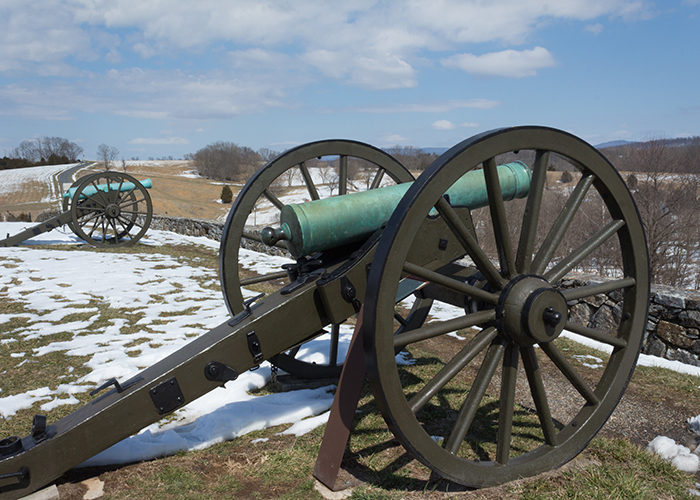 Previous Day |
Vienna, VA → Harrisburg, PA → Philadelphia, PA 266.0 mi (428.1 km) |
 More 2018 Adventures |
Or at least to the battlefields! This morning, I had to say farewell to all my friends in Vienna. We’d shared lots of chocolate, and I got to sign some autographs, and Barney the Paleontologist even showed me the remains of an old road from the Spanish-American War (1898) that ran right through their backyard! I’ll miss these folks and hope we get to have more adventures in the future!
 |
| From left to right: Barney, Dudley Dinsdale, Me, Chef Puffin, Penguin Jr, Ms. Penguin, Penguin III, Penguin, Danny Dinsdale |
After brunch and a photo, I was on my way north to explore two super important battle sites in the Civil War, starting with the Battle of Antietam, which produced the single bloodiest day in American history!
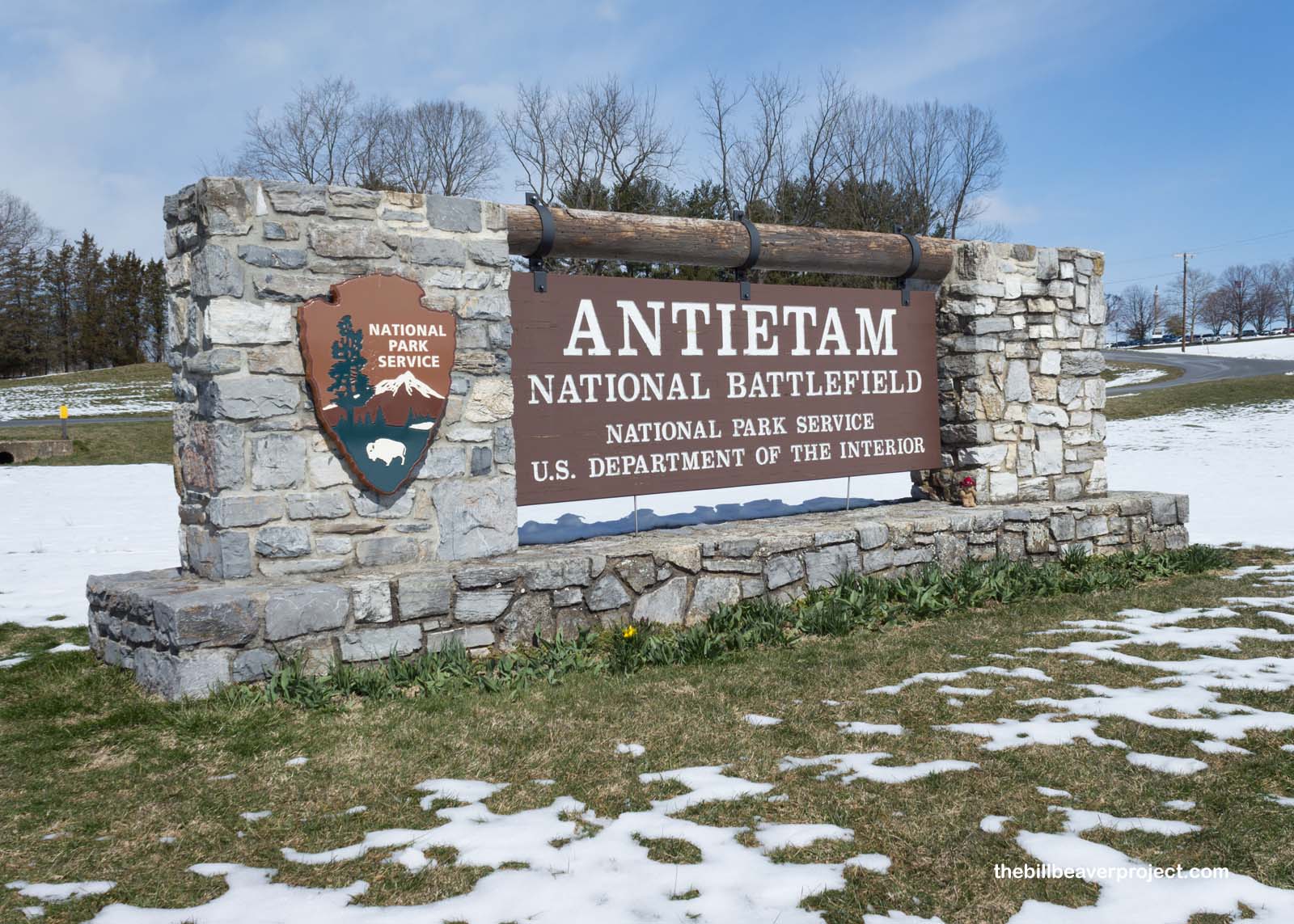 |
A chilly wind whipped through the monuments at the visitor center as I overlooked a small church, the Dunker Church, which was a big focal point for Union attacks but also served as a medical station for both Union and Confederate soldiers! The poor Dunkers, similar in practice to the Amish and Mennonites, had to evacuate and sadly, never returned to practice at this church.
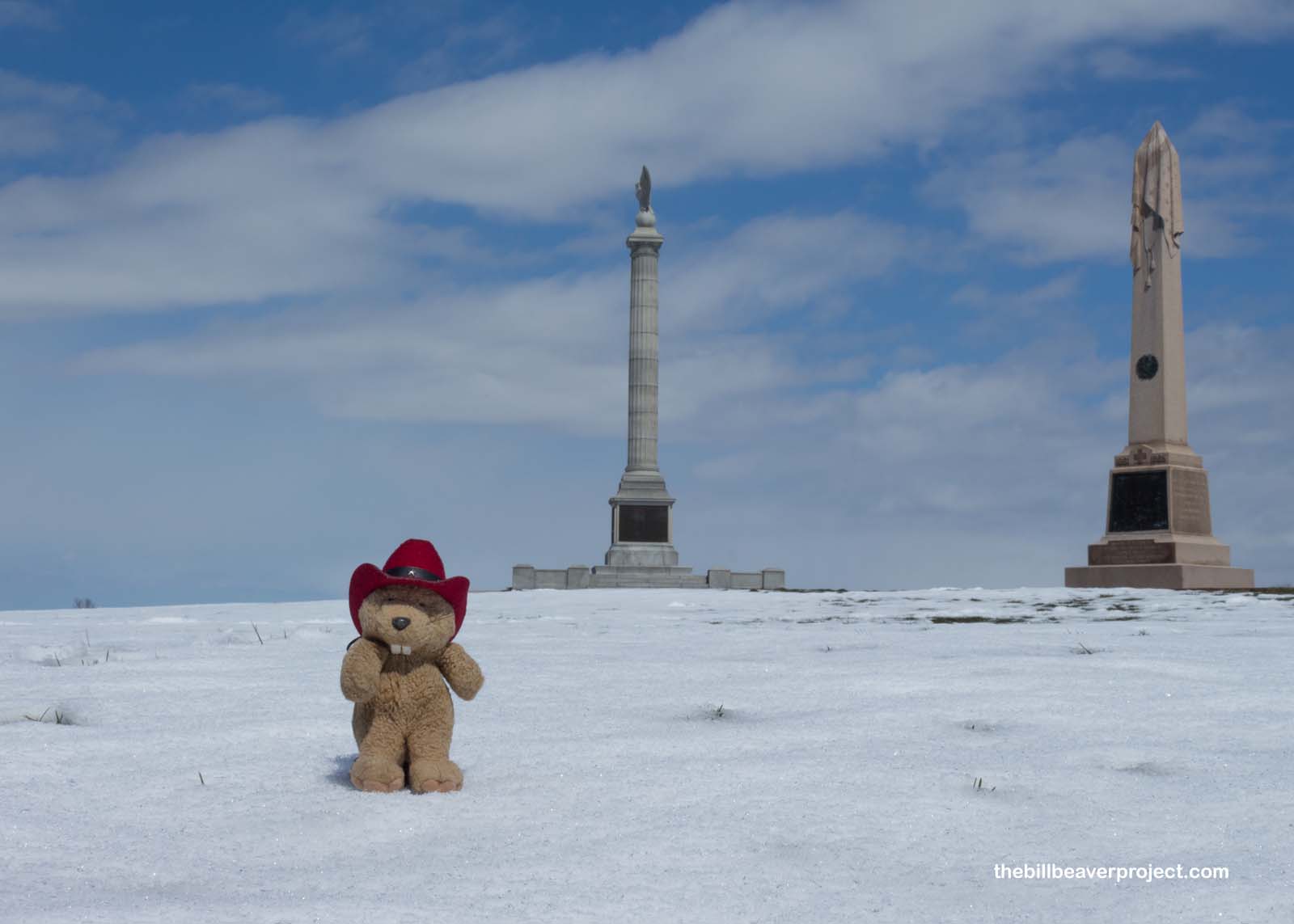 |
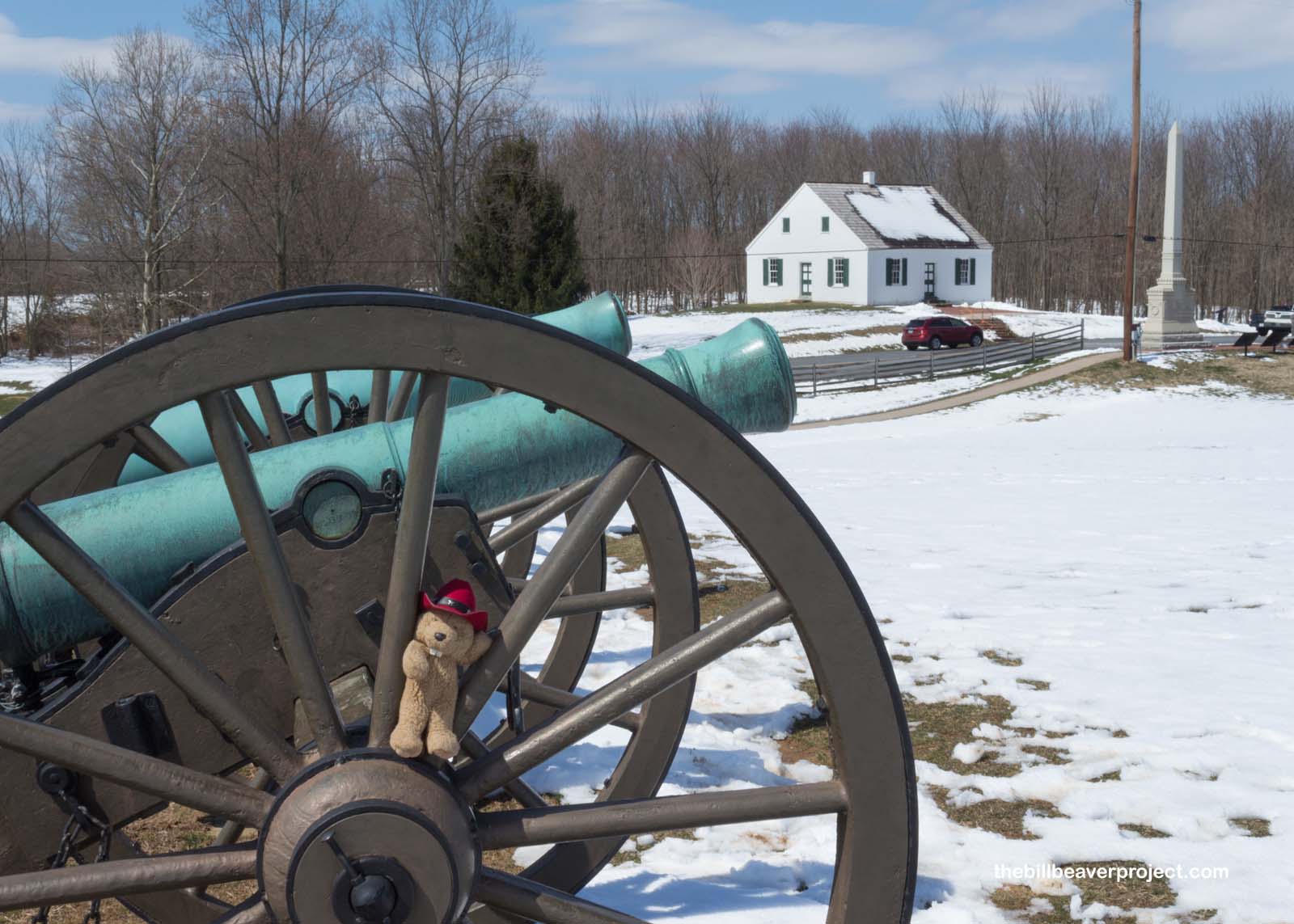 |
Here, at dawn on September 17, 1862, the Union Army, having seized the Confederate plans at Monocacy, fired the first shots at Antietam, and for the next four hours, the forces of Hooker and Mansfield battled Jackson, Hill, and Hood. Over 25,000 soldiers turned this field into rubble!
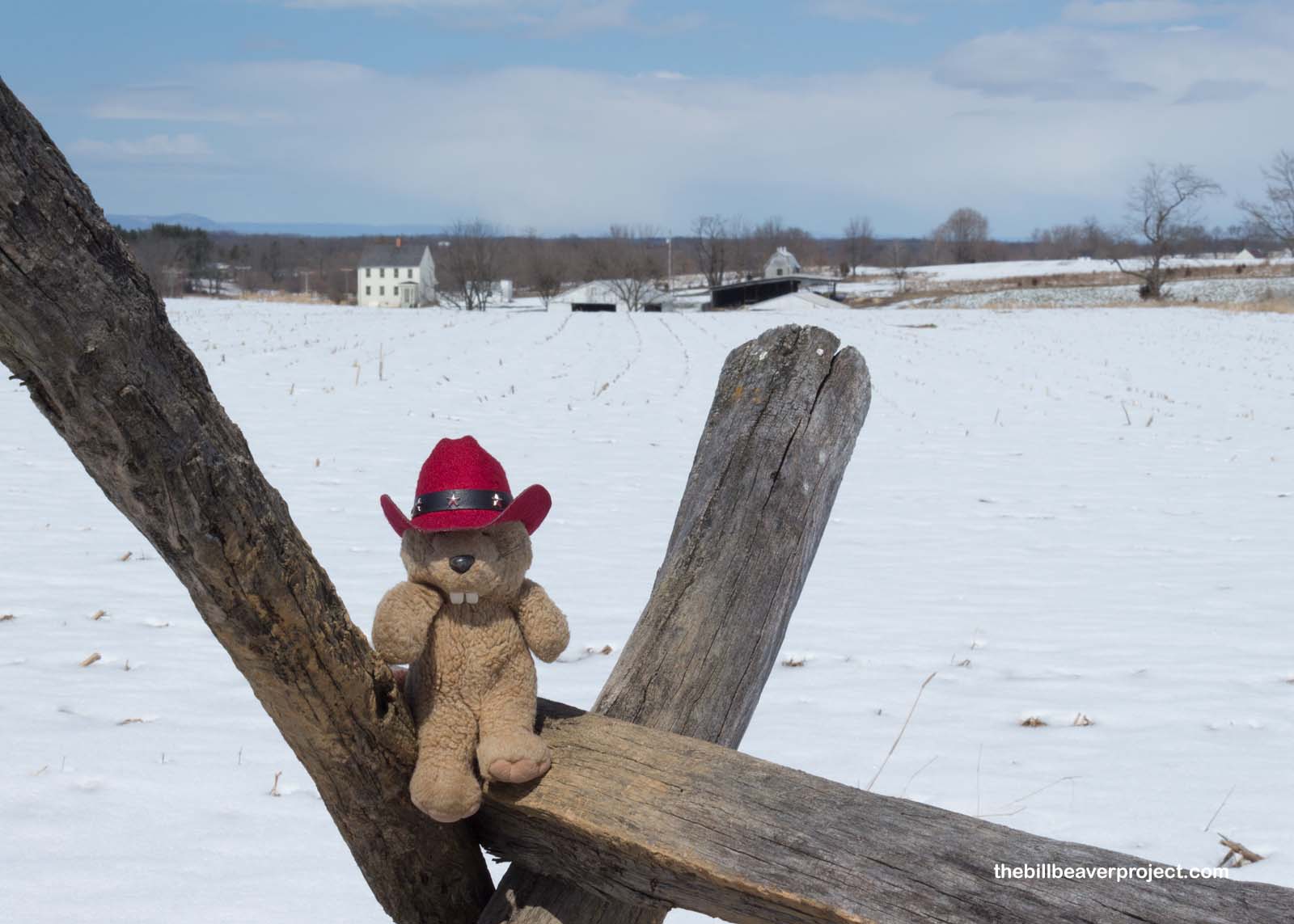 |
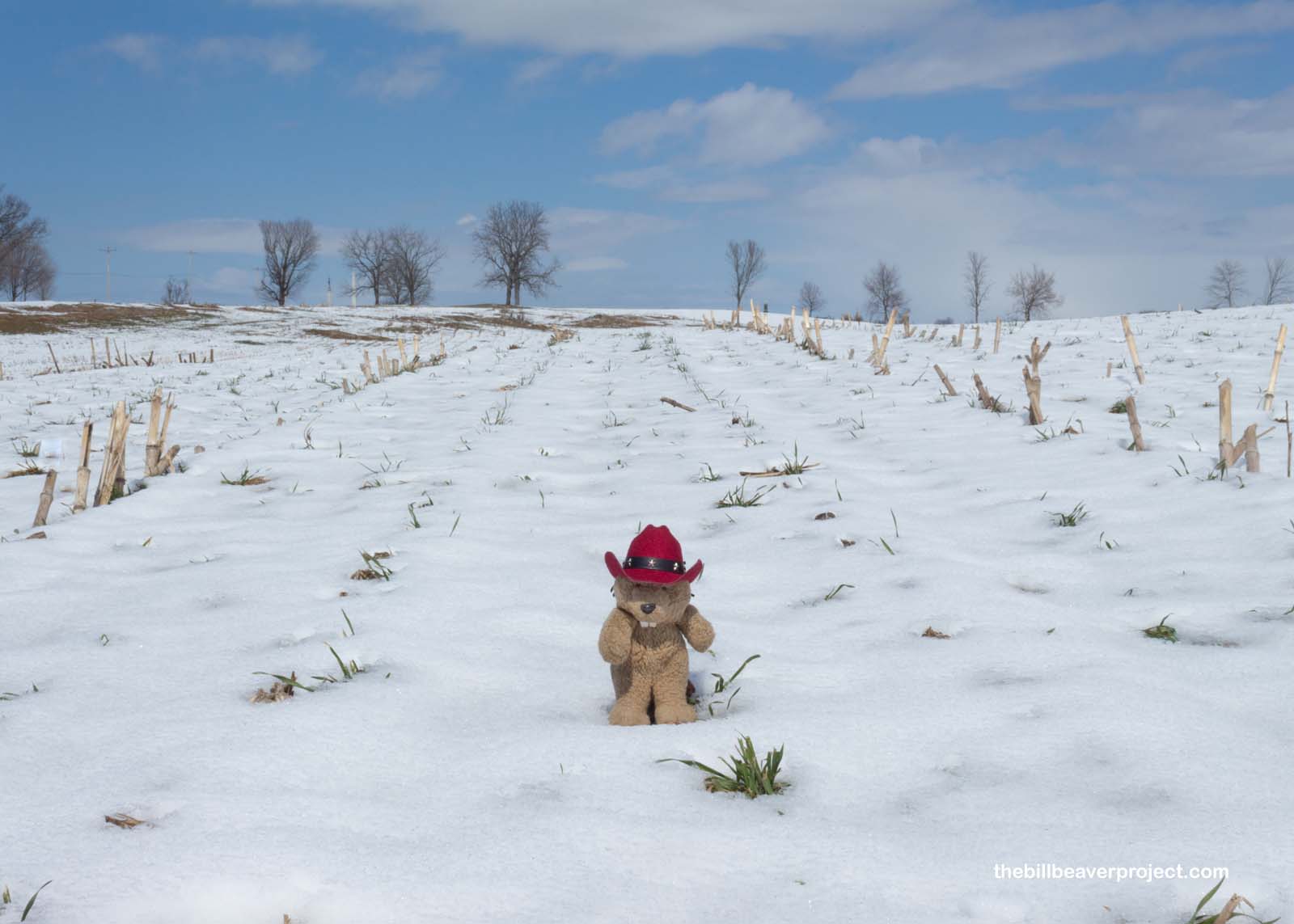 |
In the midst of the fighting stood the home of the farm owners, the Mummas. Samuel and Elizabeth Mumma, warned of the impending battle, had fled with their ten children as Confederate soldiers burned their home to the ground to prevent it from being used by Union sharpshooters. Though they were able to rebuild their property in 1863, they didn’t receive any government compensation, because their farm hadn’t been destroyed by Union soldiers!
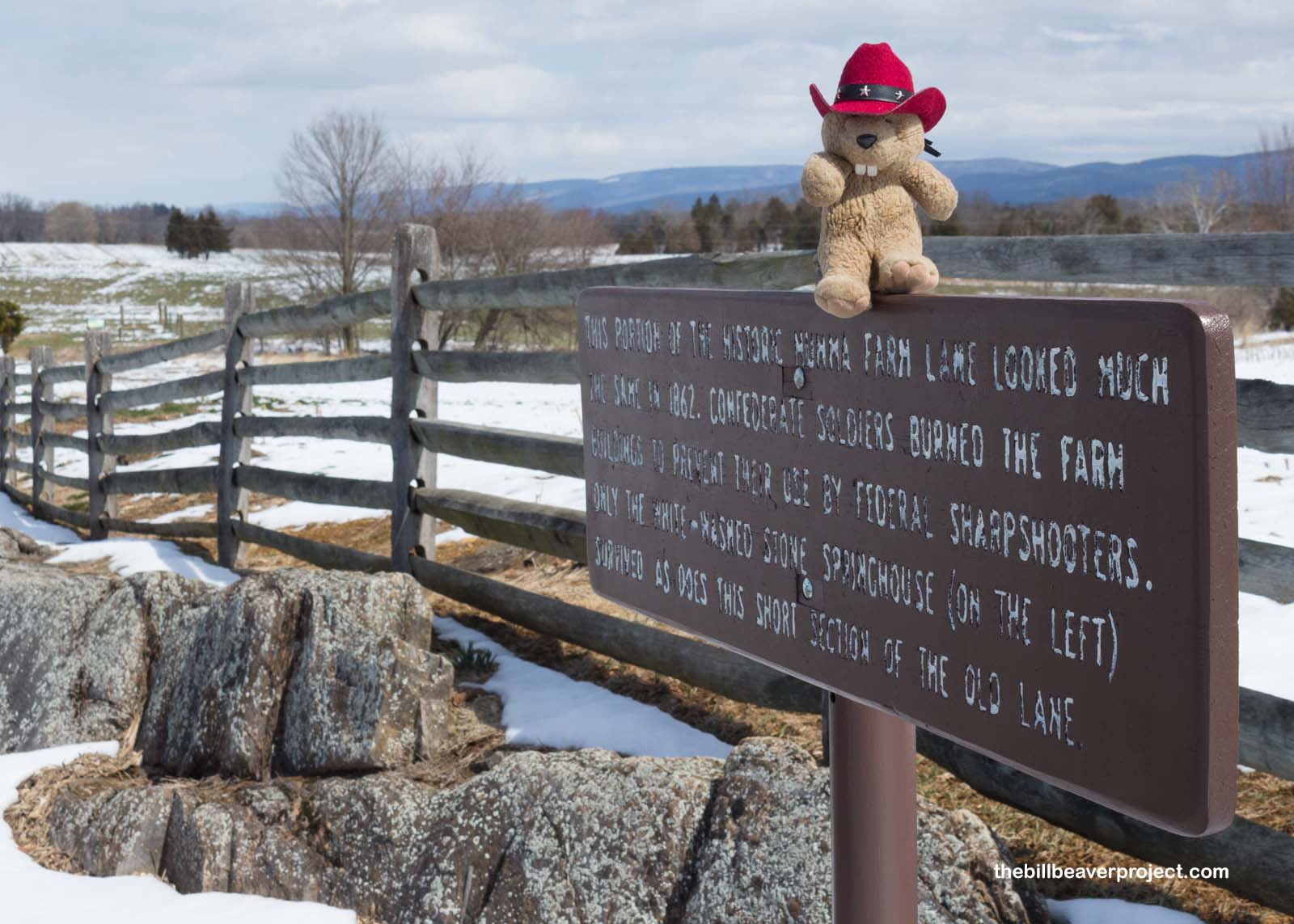 |
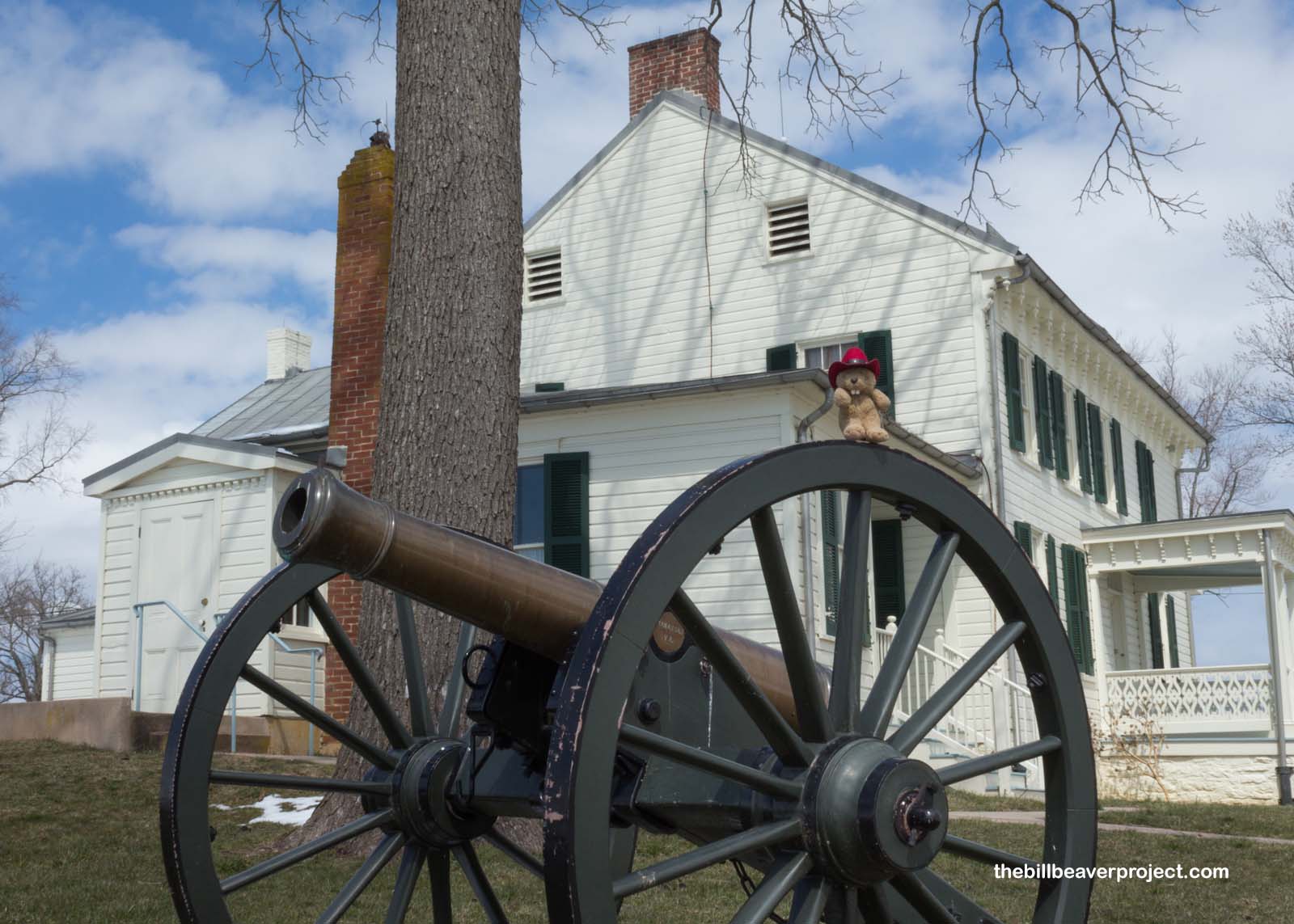 |
Eight hours after the first shots, there were over 15,000 casualties, and over a third of them all fell into the nearby sunken road, which came to be known as Bloody Lane. The historical photos are pretty horrific, and though the bodies have since been exhumed and moved to proper cemeteries, it was super eerie walking down Bloody Lane.
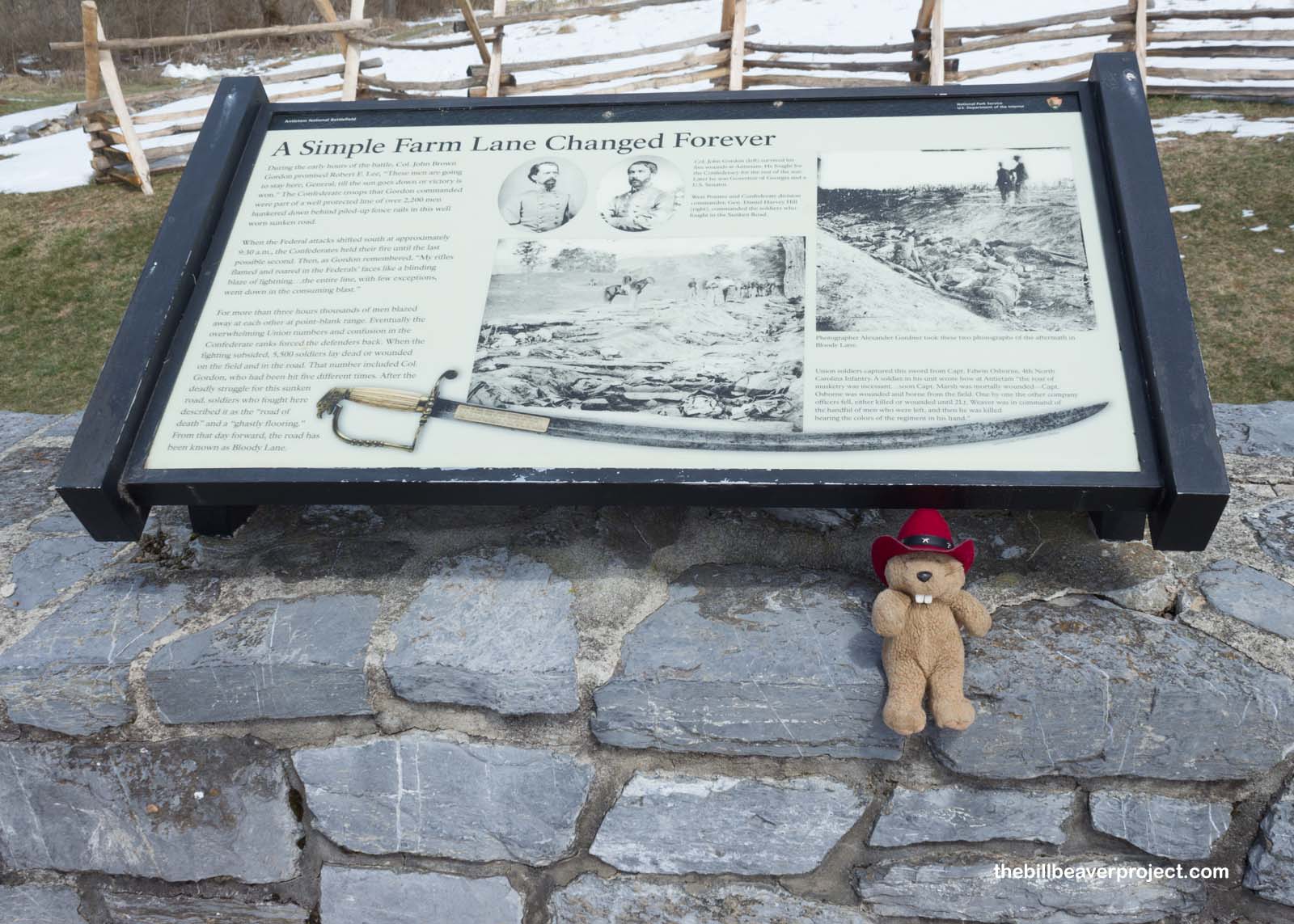 |
It stretched for quite a way, and the chill came from more than just the cold, at least until a tourist mother had her kids to lie down in the mud and pretend to be dead so she could snap some fun photos.
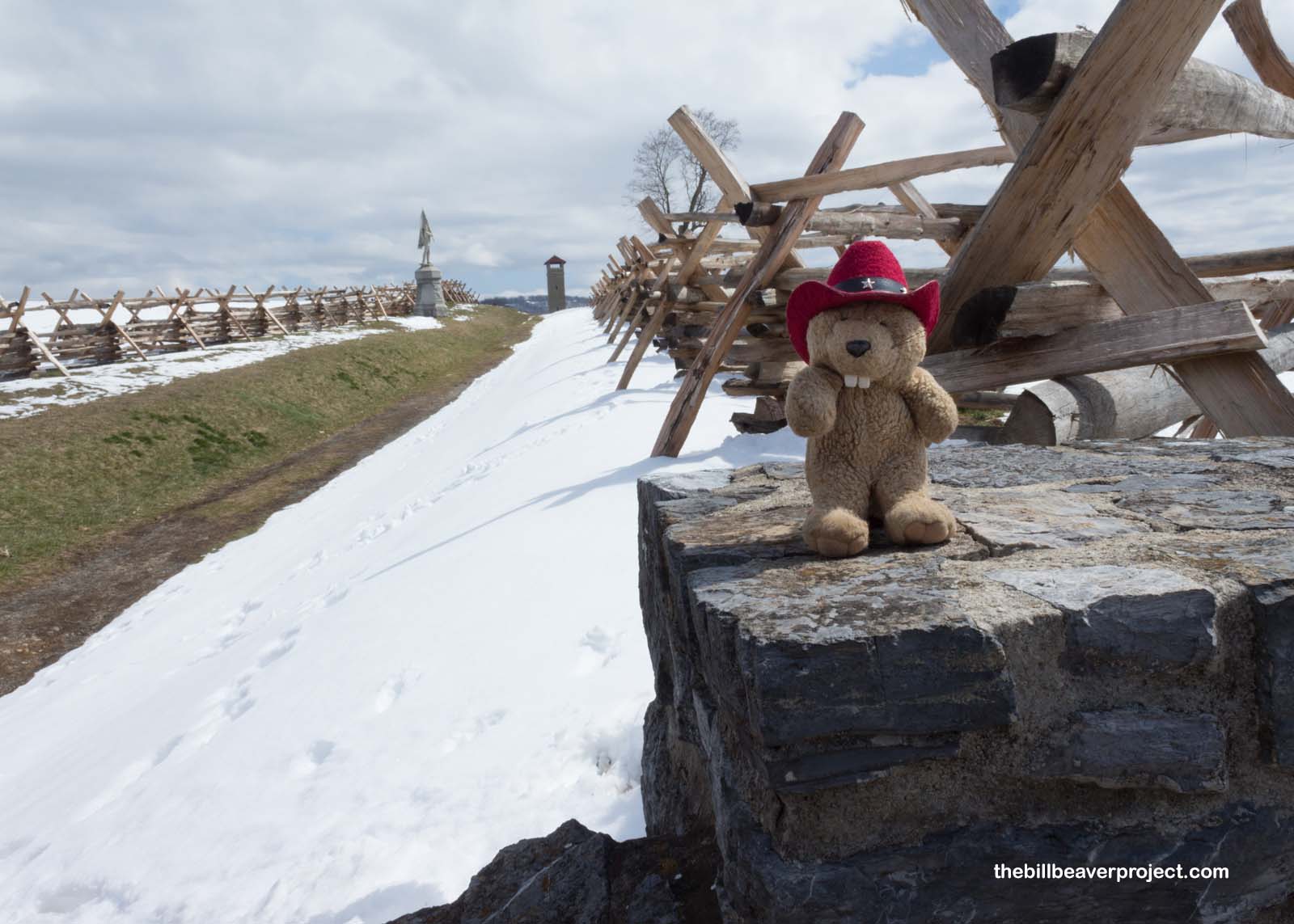 |
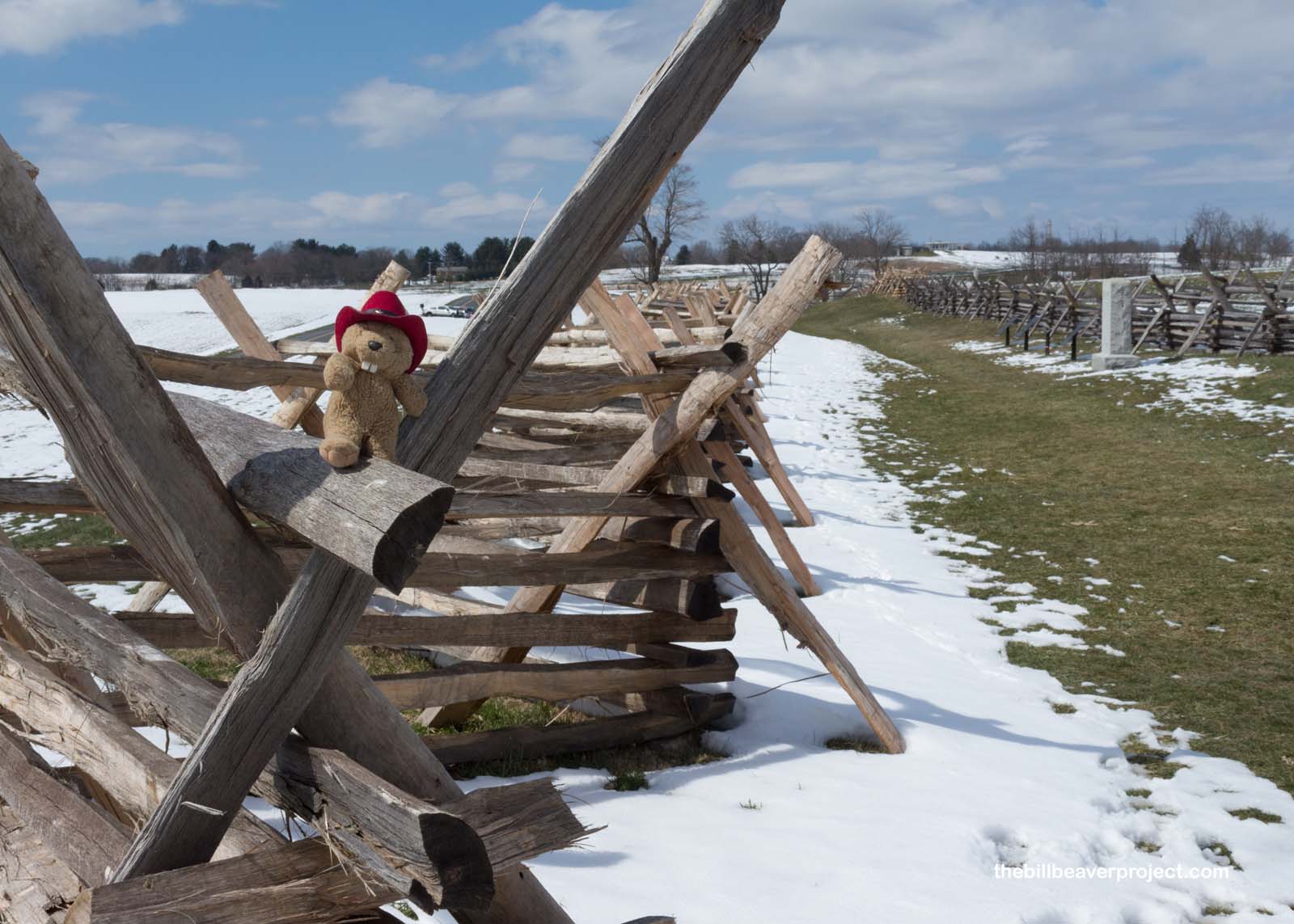 |
At the end of Bloody Lane, a lookout tower gave a more comprehensive view of the lane and the battlefield at large, stretching on for miles on all sides, to the cornfield and beyond, way up to Gettysburg, my next destination.
 |
First, though, I had to stop by the Burnside Bridge, where the troops of General Ambrose Burnside, whose hairstyle gave us the word “sideburns,” fought their way across Antietam Creek and pushed the Confederate forces back to the town of Sharpsburg!
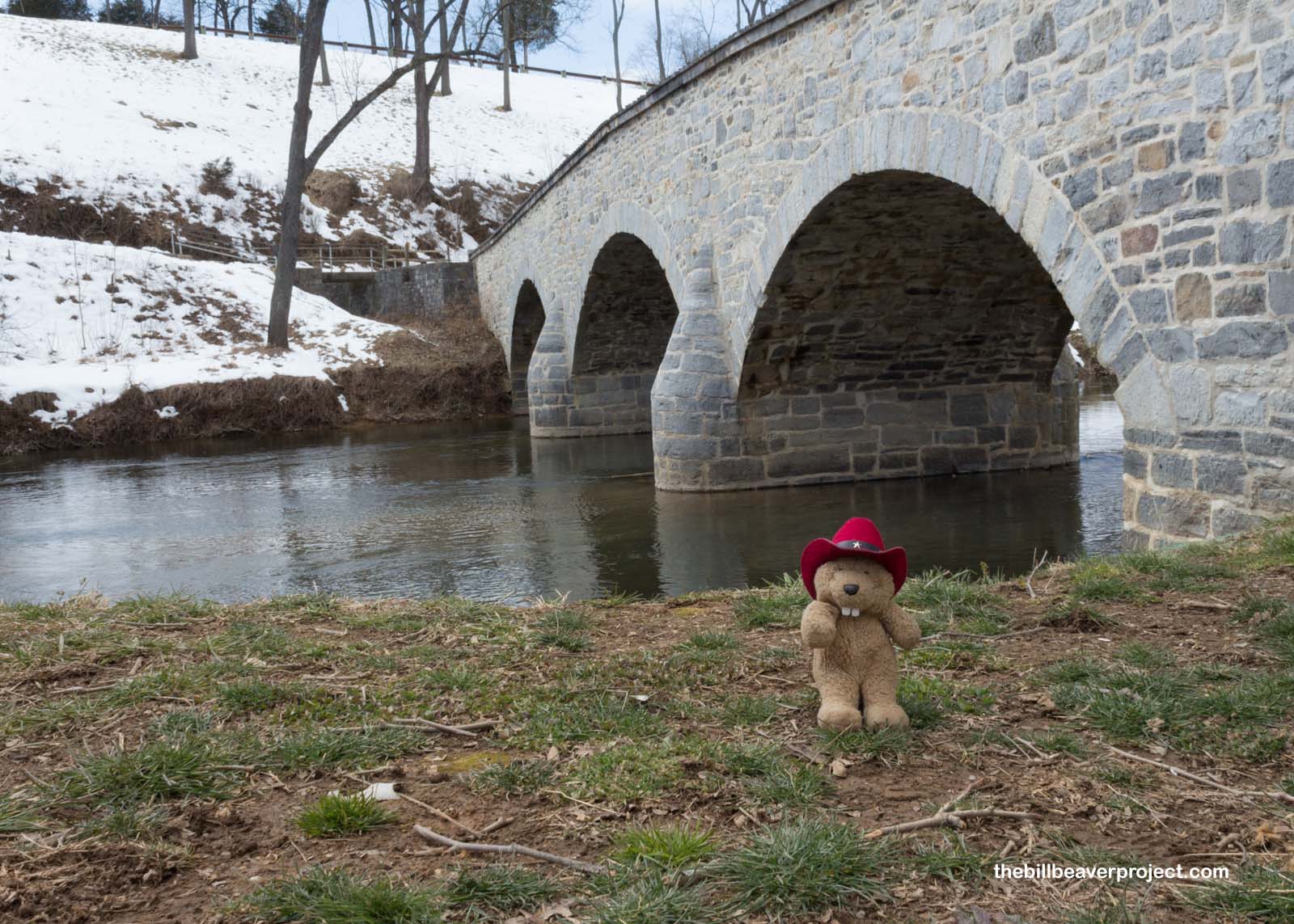 |
Not far away, the Burnside Sycamore kept watch, and still does to this day!
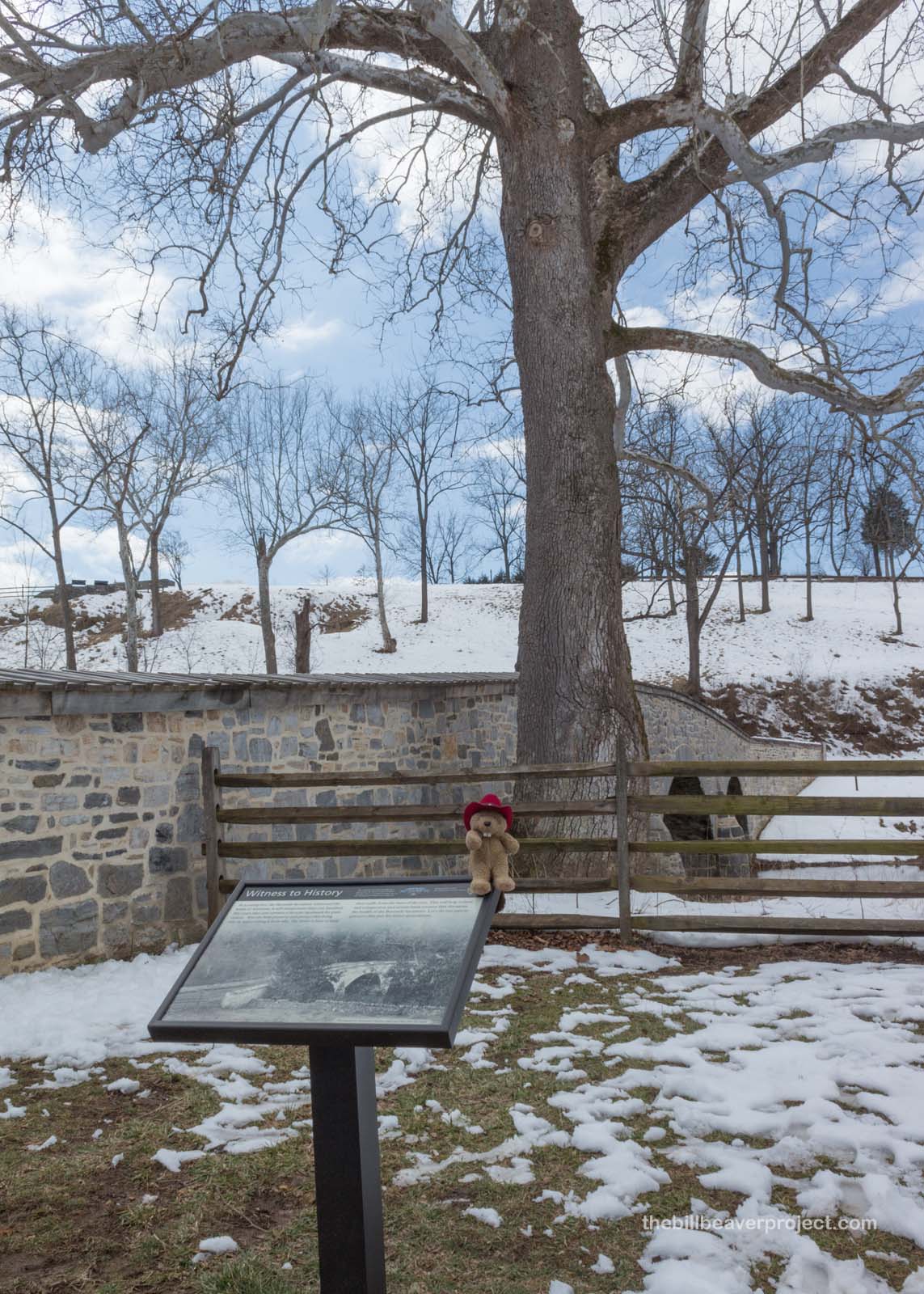 |
The last Union attack happened here where these cannons now stand. Over 23,000 soldiers had been killed or wounded here, but neither side chose to fight on for a second day. General Lee retreated back to Virginia, but it would be a while before the first decisive Union victory, about an hour up the road at Gettysburg!
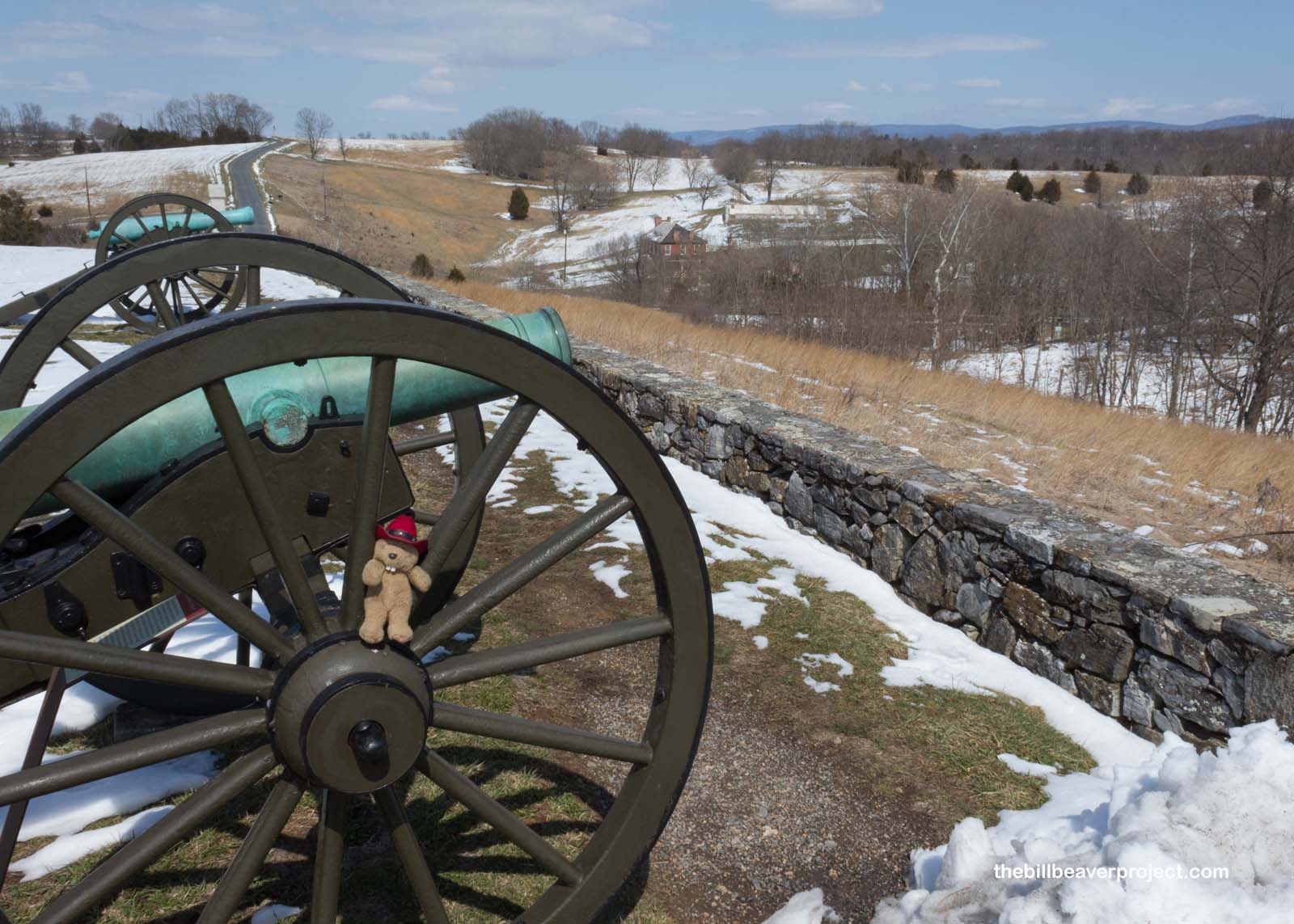 |
Gettysburg National Military Park, just across the border in Pennsylvania, is very well suited to accommodate its annual one million plus visitors! With a massive visitor center, full of shops, a museum, and a restaurant, it’s almost overwhelming to a first-time visitor, but not nearly as overwhelming as the park itself!
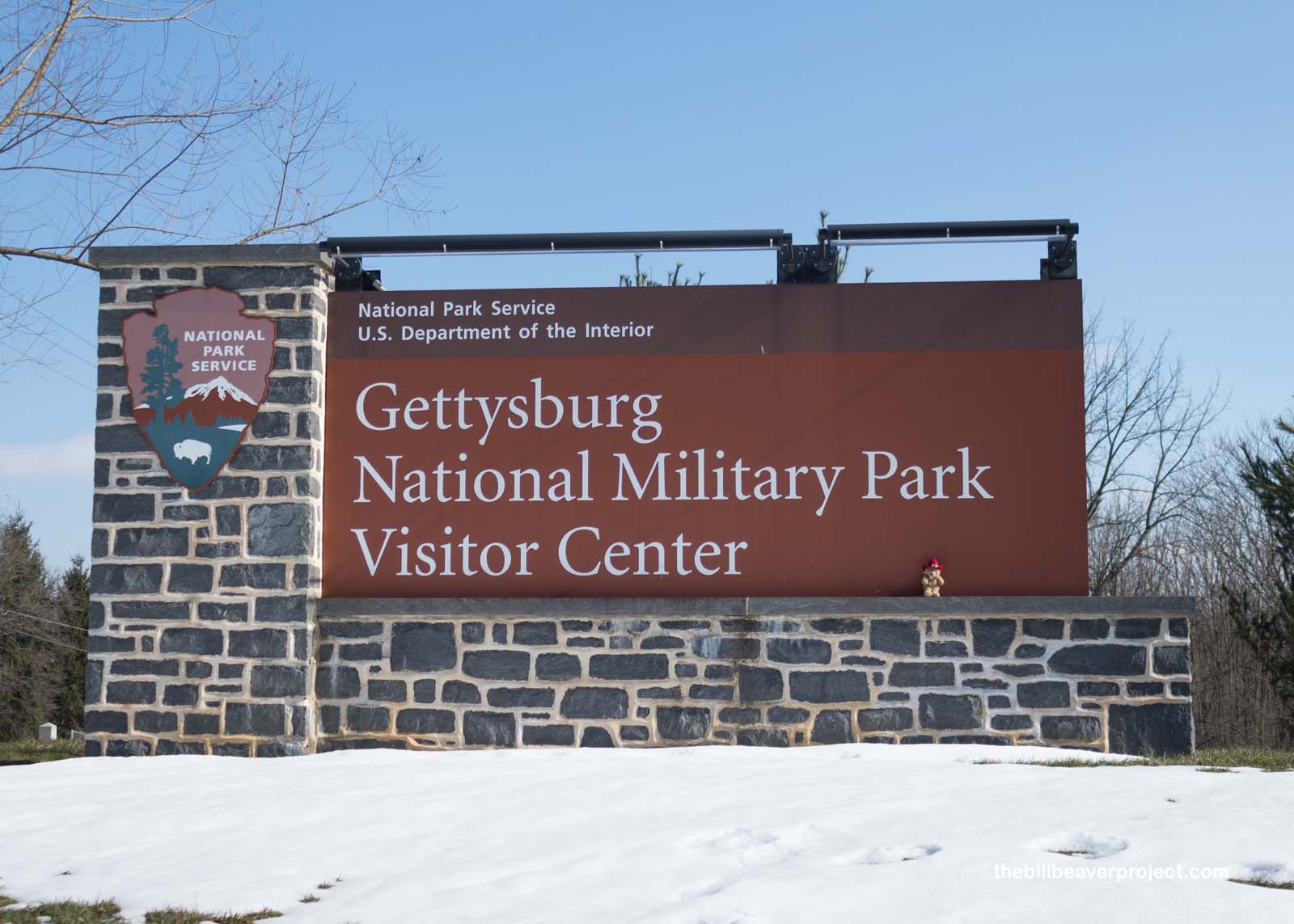 |
Most folks will forever affiliate the Battle of Gettysburg with President Abraham Lincoln, who delivered his Gettysburg Address here on November 19, 1863, five months after the fighting at Gettysburg had finished.
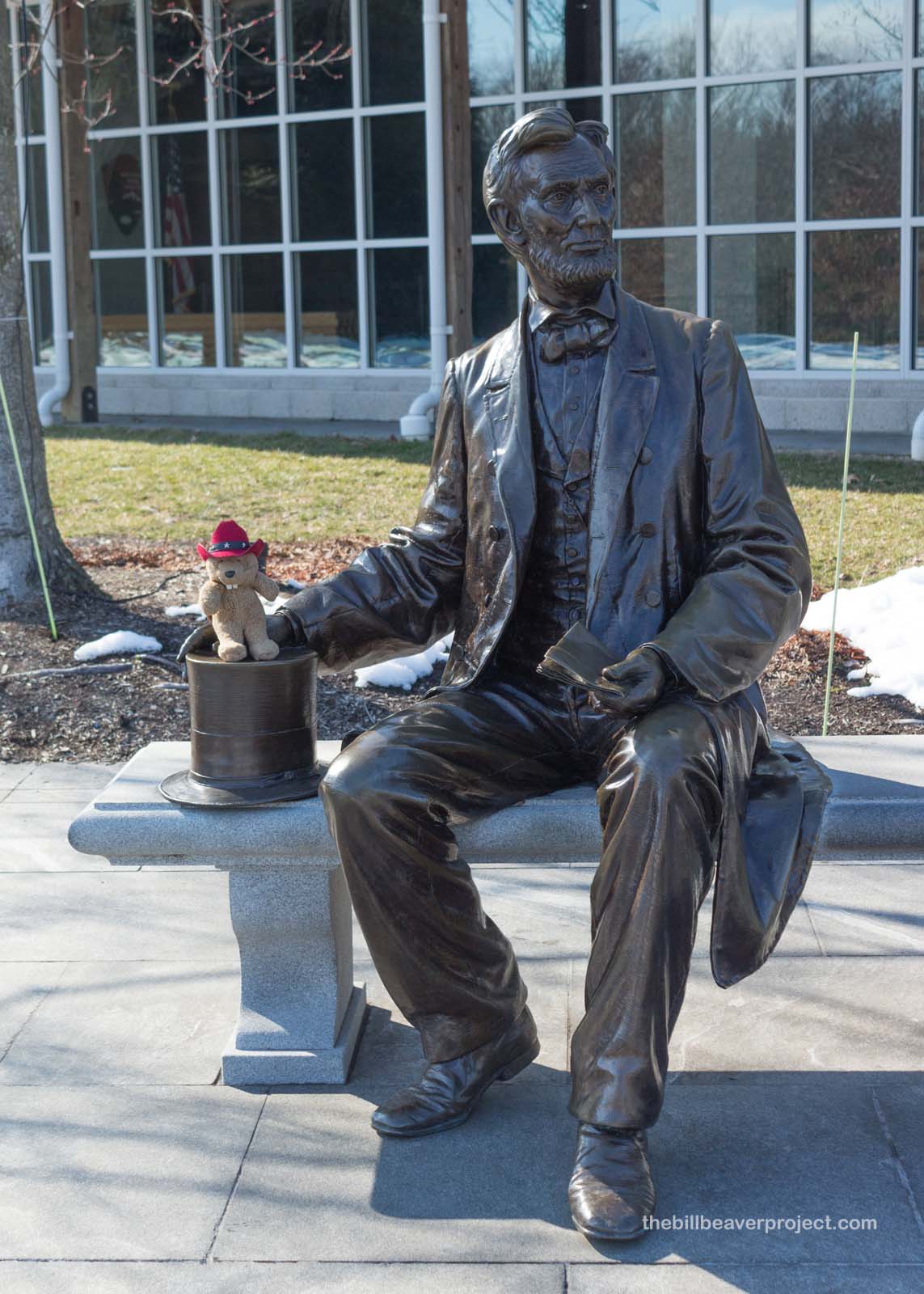 |
He delivered it at the dedication of the Soldiers’ National Cemetery, praising their sacrifice and encouraging those remaining soldiers to keep fighting for the country that their predecessors had fought and died to build “four score and seven years” earlier.
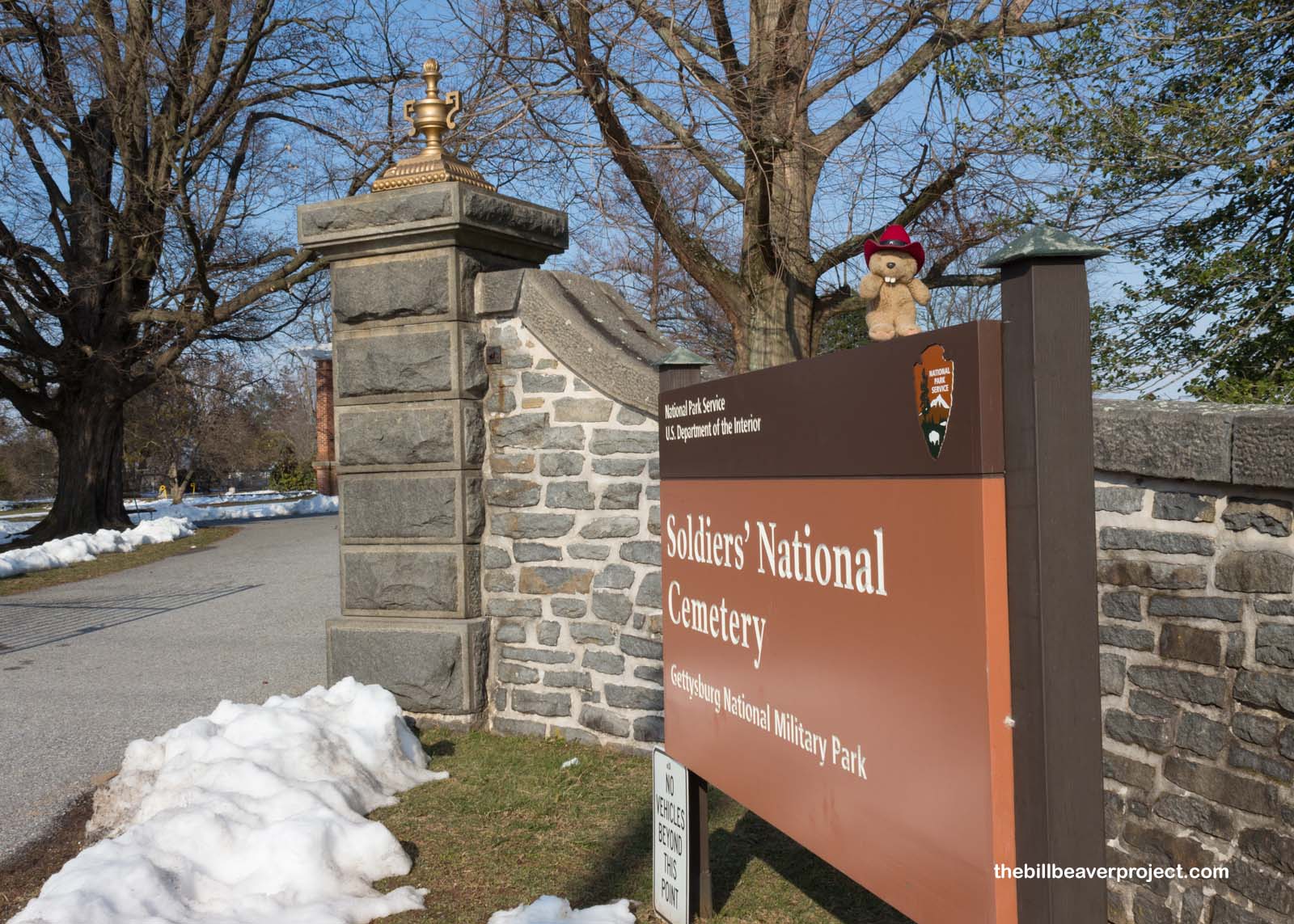 |
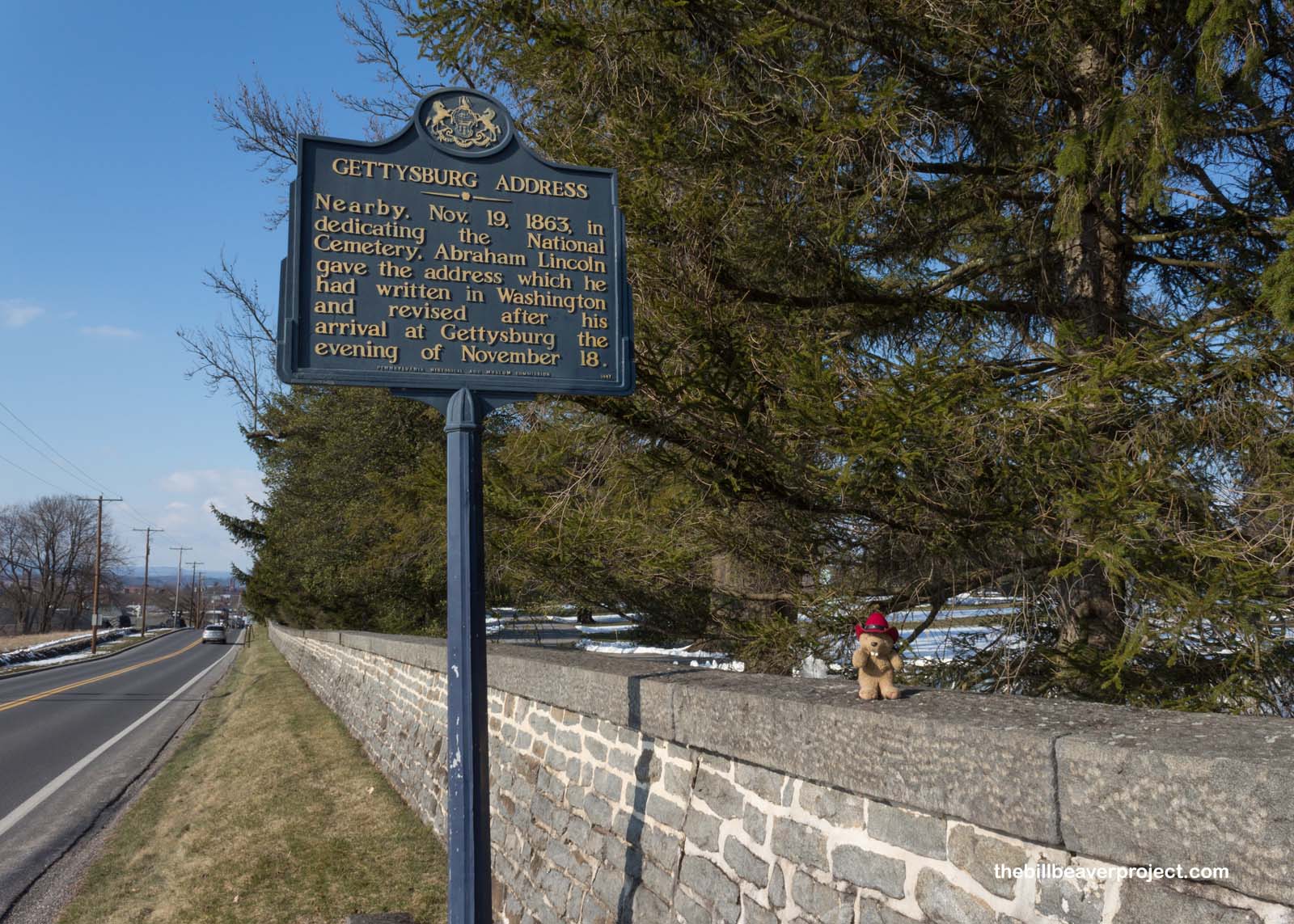 |
The actual battle, though, broke out in the heat of summer! Having turned back after Antietam, but scored a new victory at Chancellorville, General Robert E. Lee was ready to invade the North a second time! His goal with this battle was to crush the Union Army of the Potomac and gain recognition from the British and French (à la Saratoga), plus all the resources their support would entail.
There had been some turnover in the ranks. General Stonewall Jackson had died at Chancellorville, and President Lincoln had replaced General Hooker with Gordon Meade. Their replacements were ready to make names for themselves, and so the stakes could not have been higher!
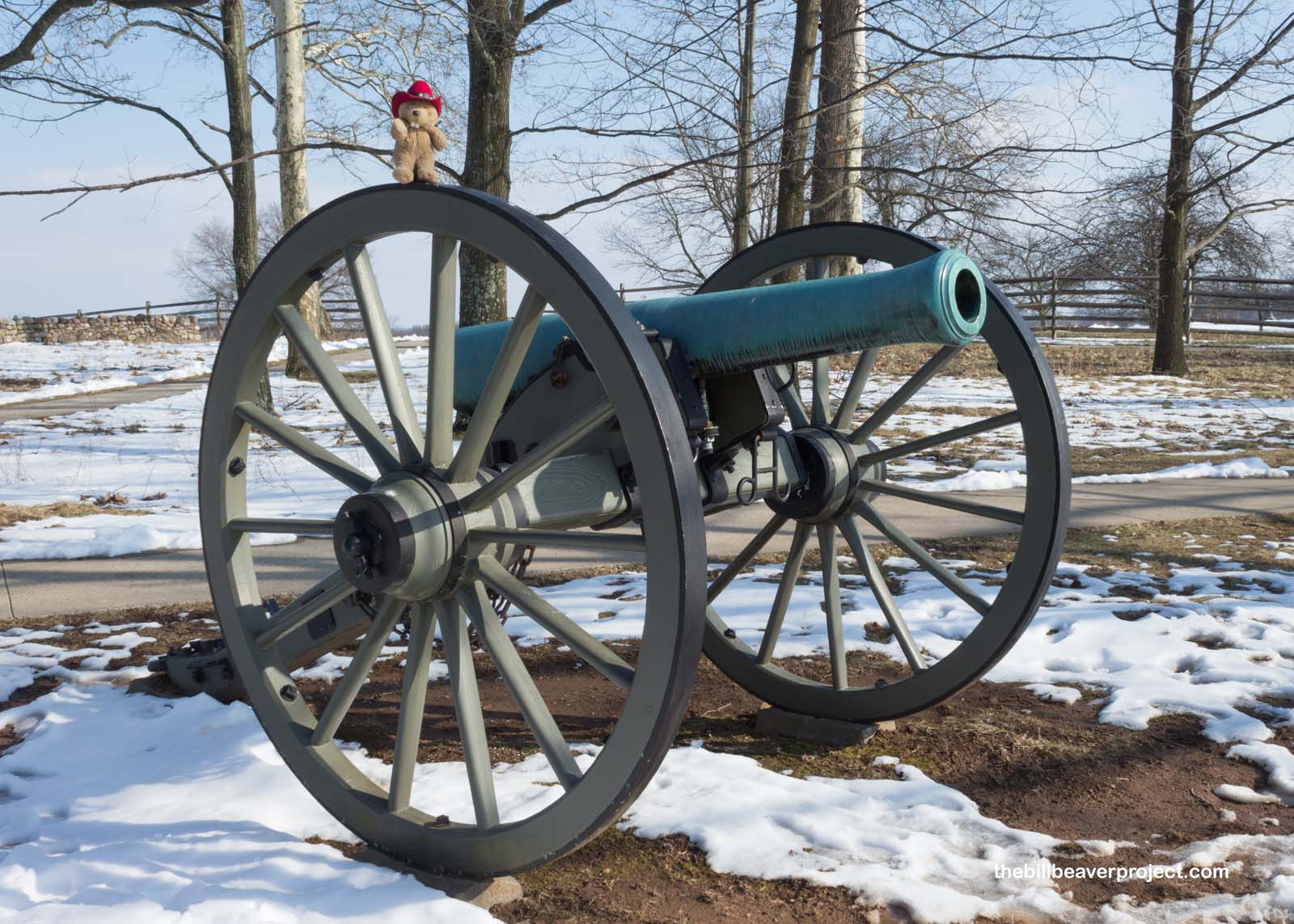 |
The Confederate Army of 75,000 pushed hard on their three-day offensive! They pushed the Union forces up into the hills, believing they were on the verge of victory, all the while not realizing that they were gradually getting surrounded. From this point, now marked by an equestrian statue of George Pickett, the Confederate Army launched Pickett’s Charge, right into the midst of the Vermont, New York and Ohio regiments, who closed in on all sides and wiped out two thirds of Pickett’s division!
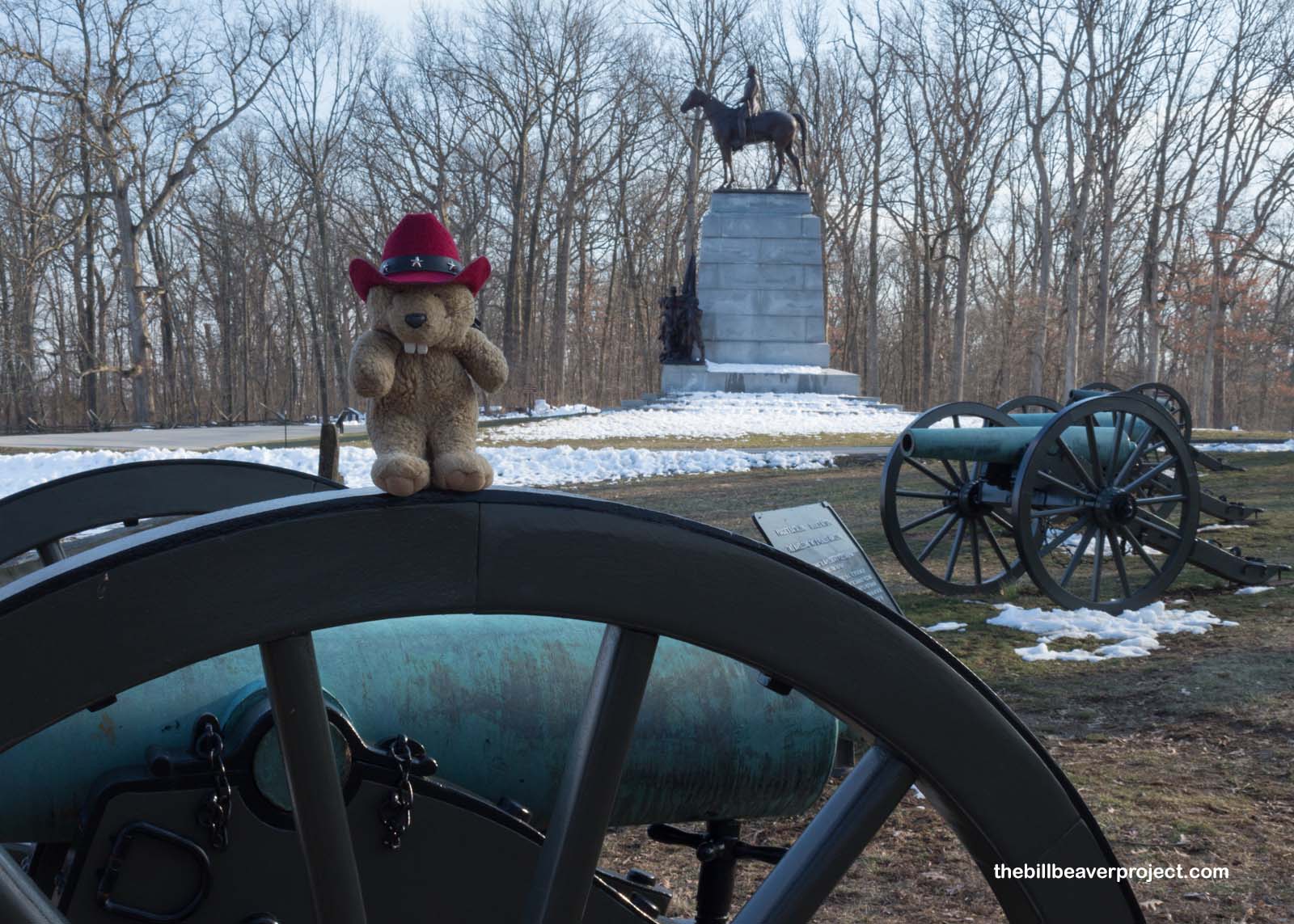 |
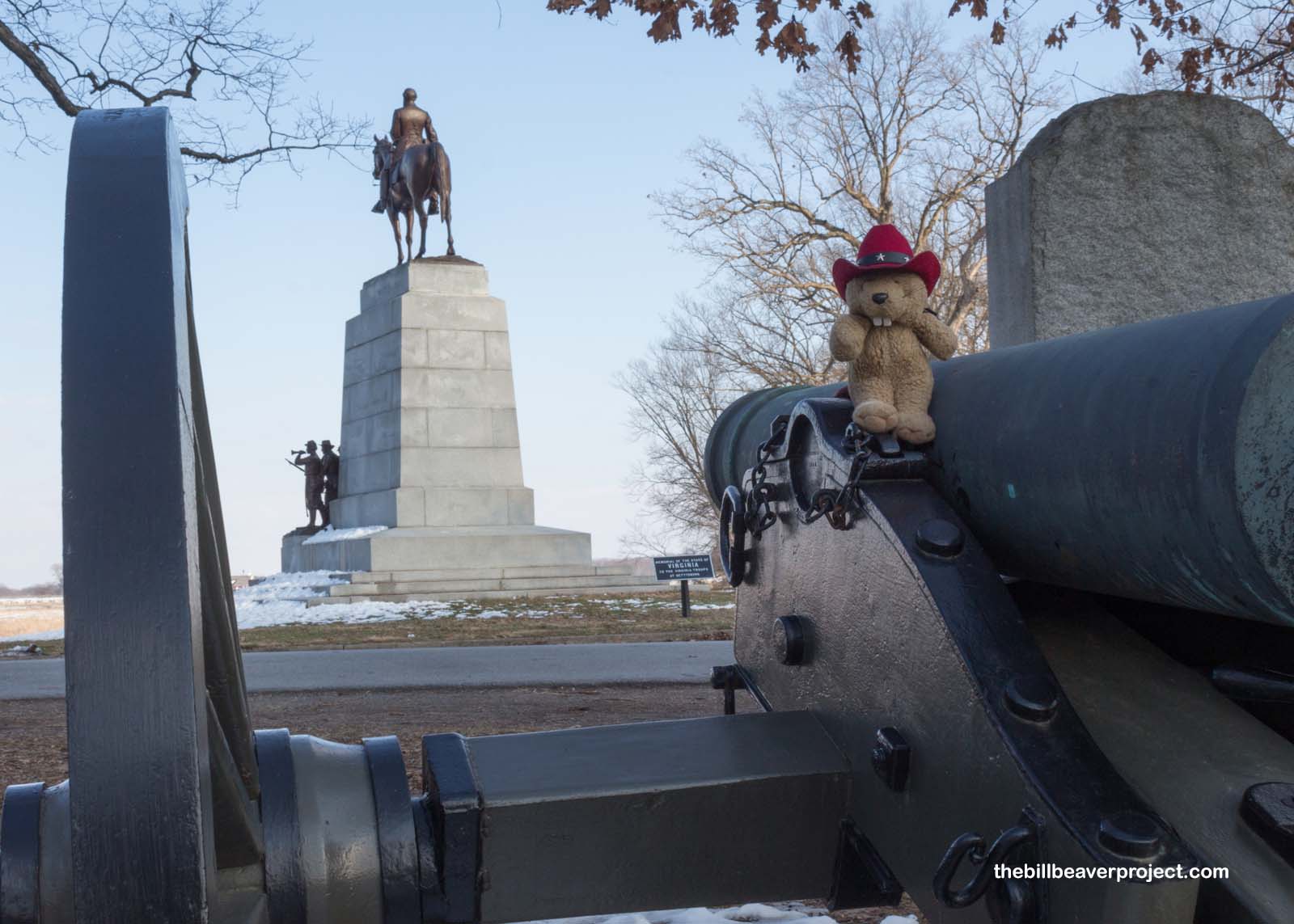 |
It was extraordinary how many monuments could fit into a single park! Every division from every state, Union and Confederate, seemed to be represented in some form, whether in commemoration of their deeds or marking of their positions over the course of the three-day battle. I had to muse for a bit on the Confederate monuments here, in light of the recent debates over whether such monuments should remain in public squares. I think places like Gettysburg are precisely where these monuments belong!
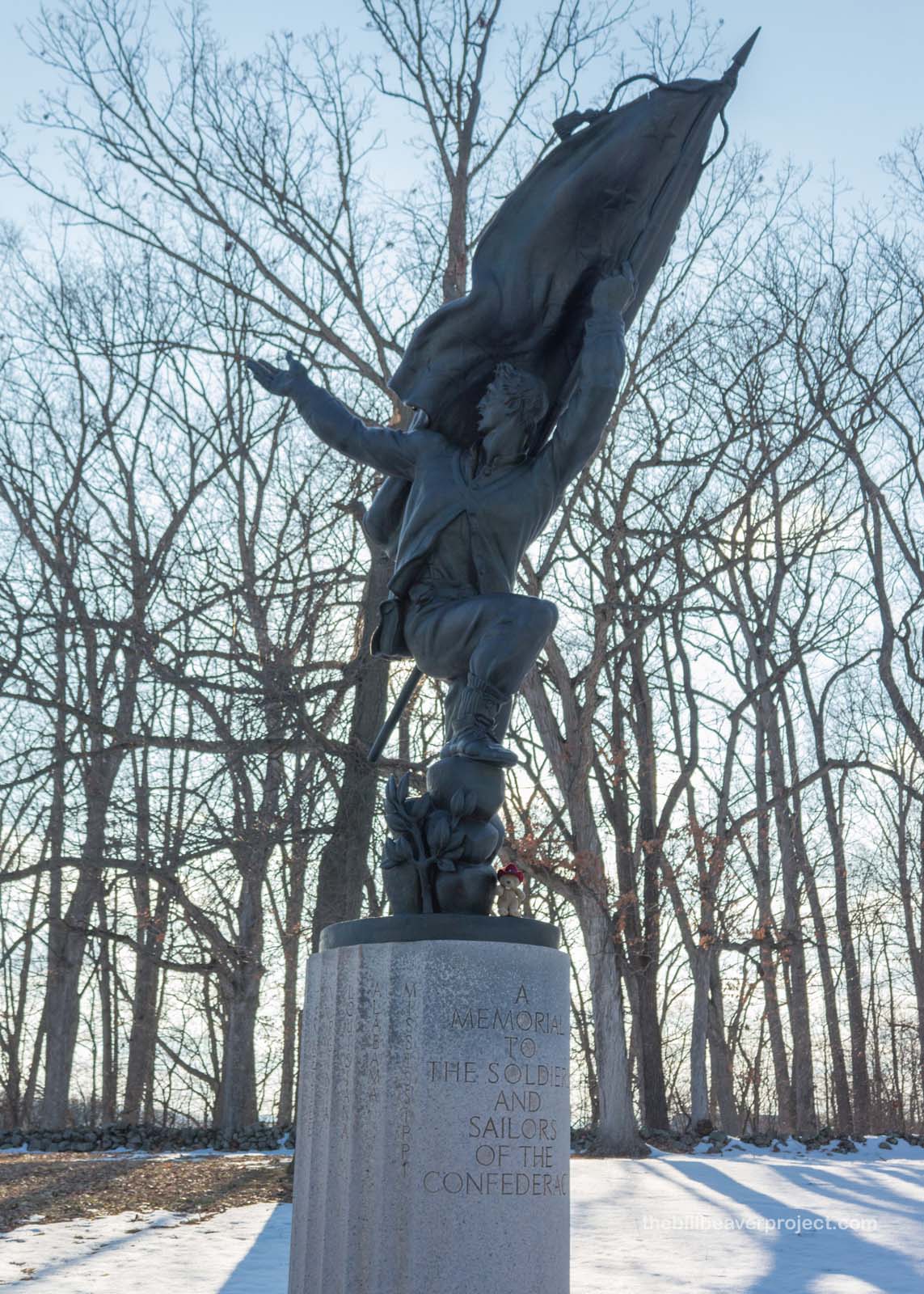 |
After a long loop, I made it to the top of Little Round Top, where the sharp eyes of Brigadier General Gouvernour Warren spotted a group of Confederate soldiers in the woods below, preparing to attack their position. Had they not been spotted, they would have outflanked the Union position and probably won the battle, but some quick signaling got two Union infantry divisions into position to defend the high ground, holding this hilltop and ensuring Union victory!
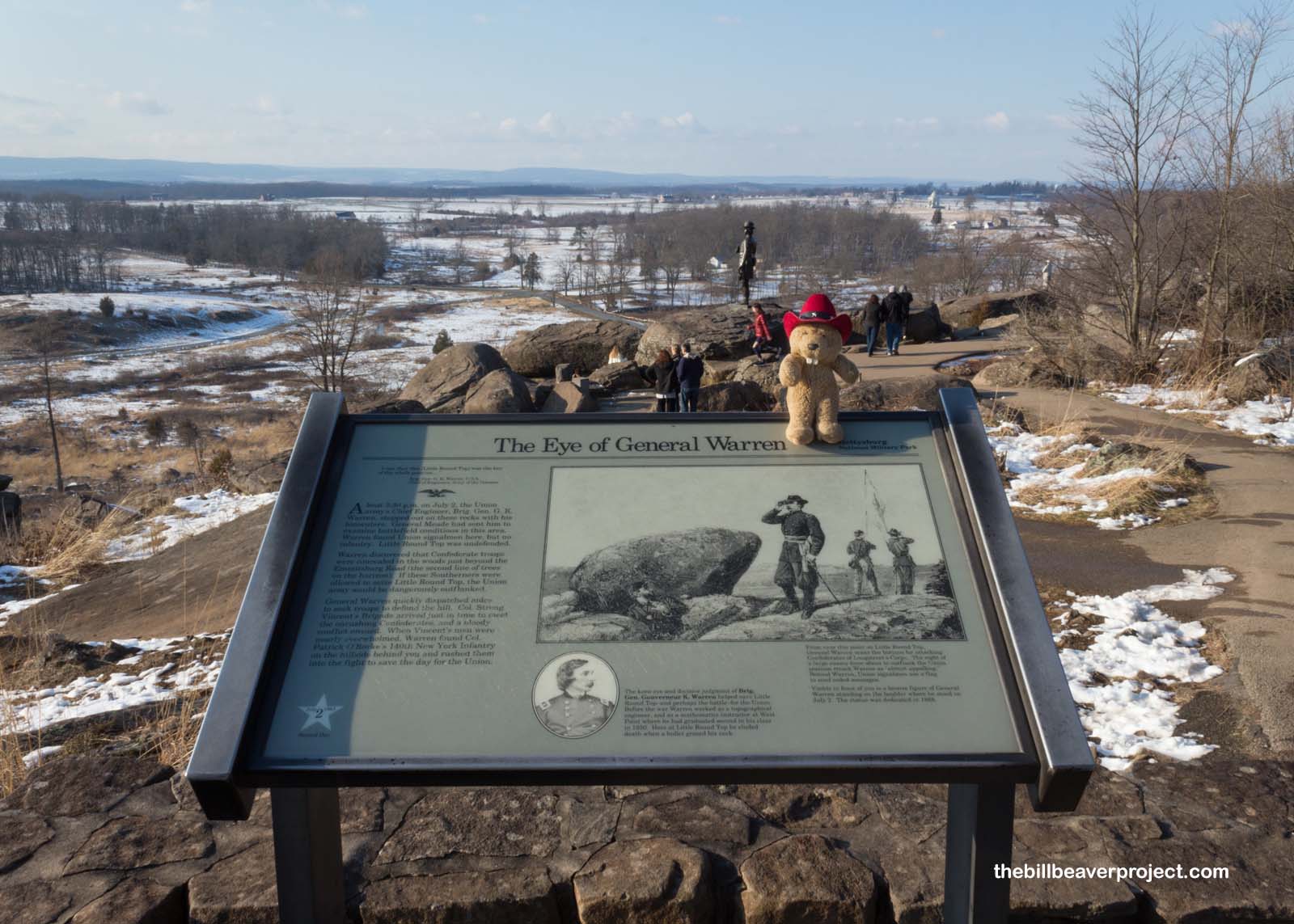 |
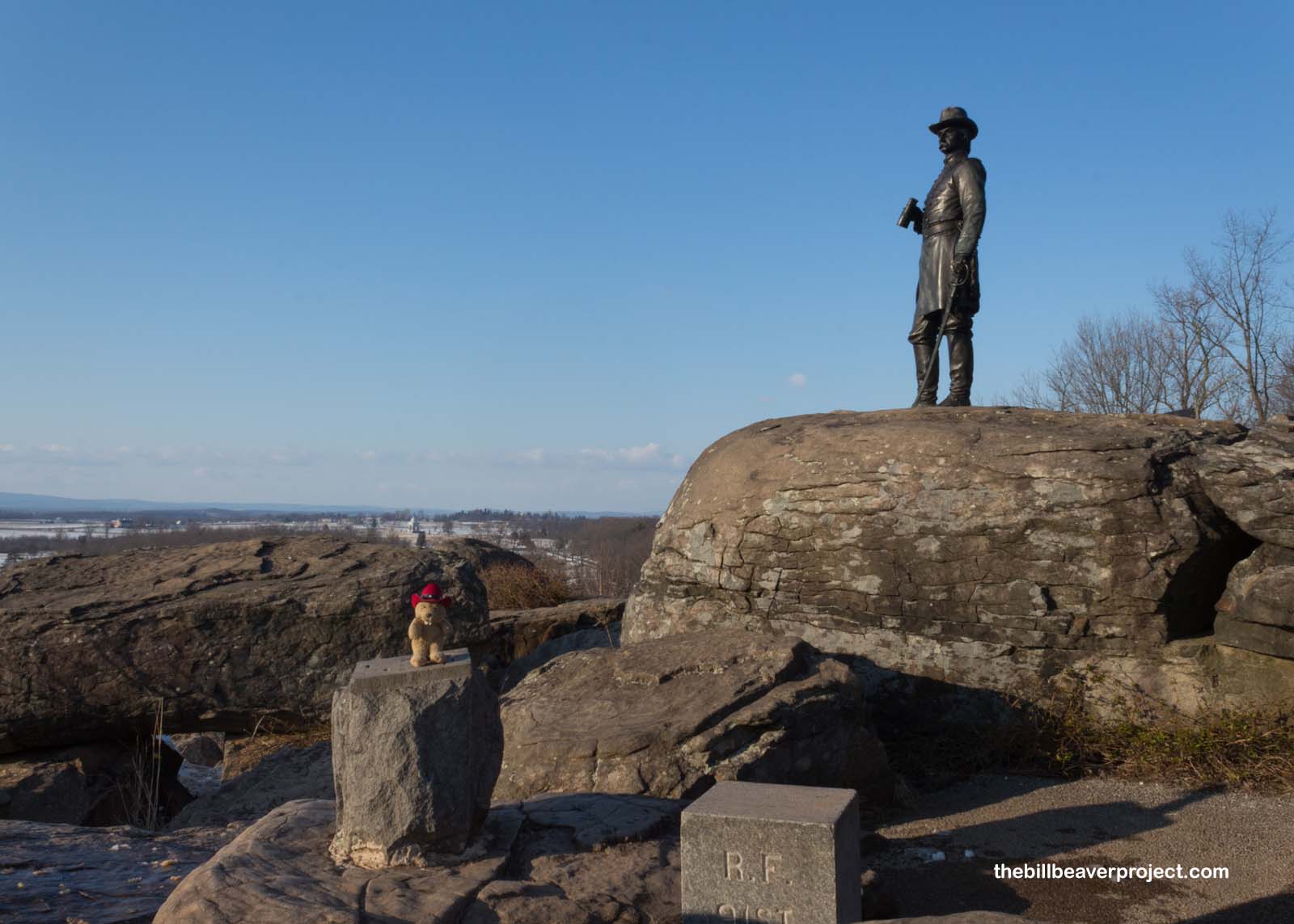 |
From the vista at Little Round Top, the miles and miles of Gettysburg National Military Park spread out on all sides, with hundreds of monuments marking where over 35,000 troops fell. It would take days or even weeks to see them all, but with the sun setting, I had to be on my way.
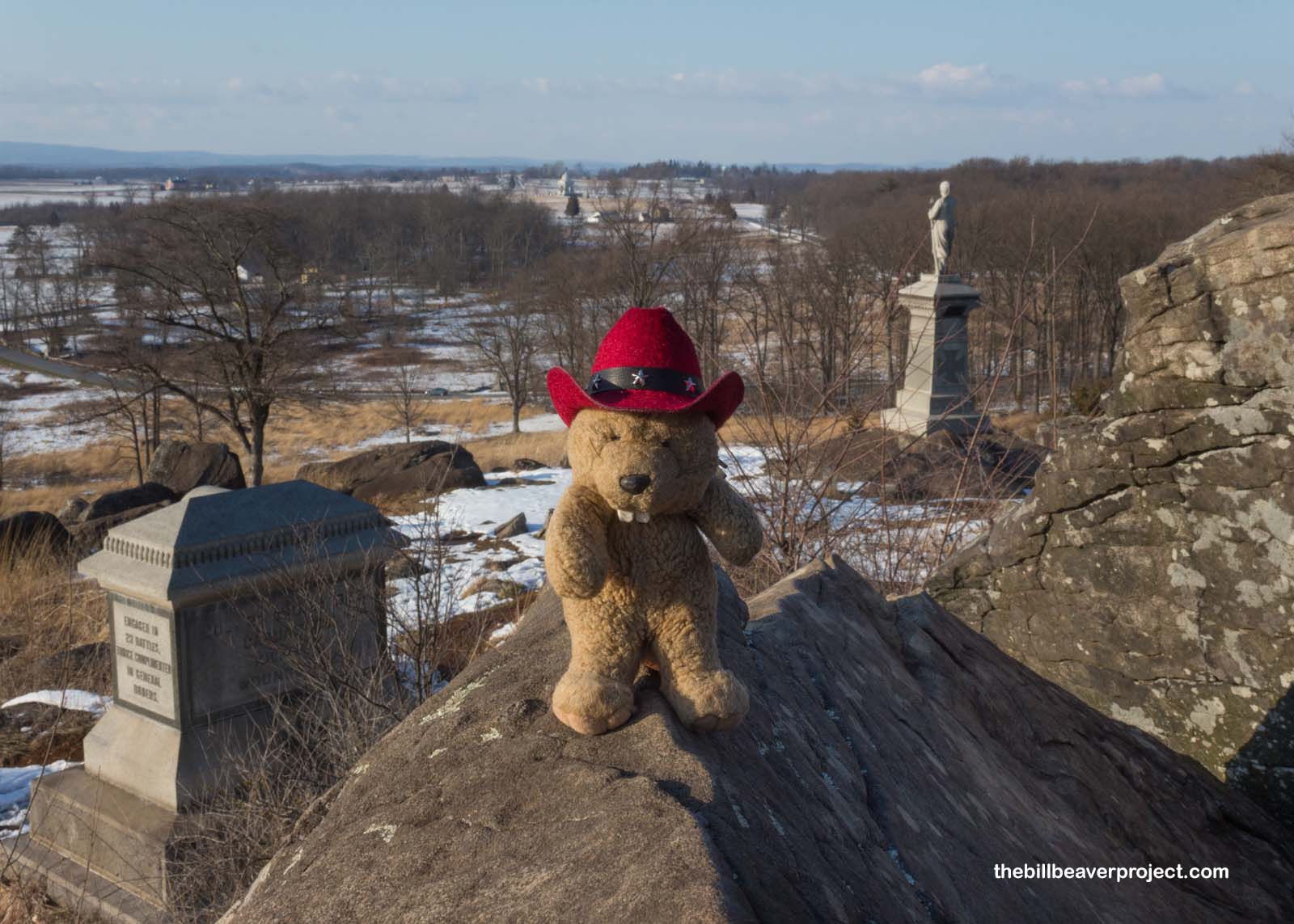 |
As at Antietam, fields of crops turned into bloody battlefields. The wheat field at the base of Little Round Top changed hands six times in the three-day battle of Gettysburg, and it was the Union defeats here that pushed them back into the surrounding hills, where they were able to regroup!
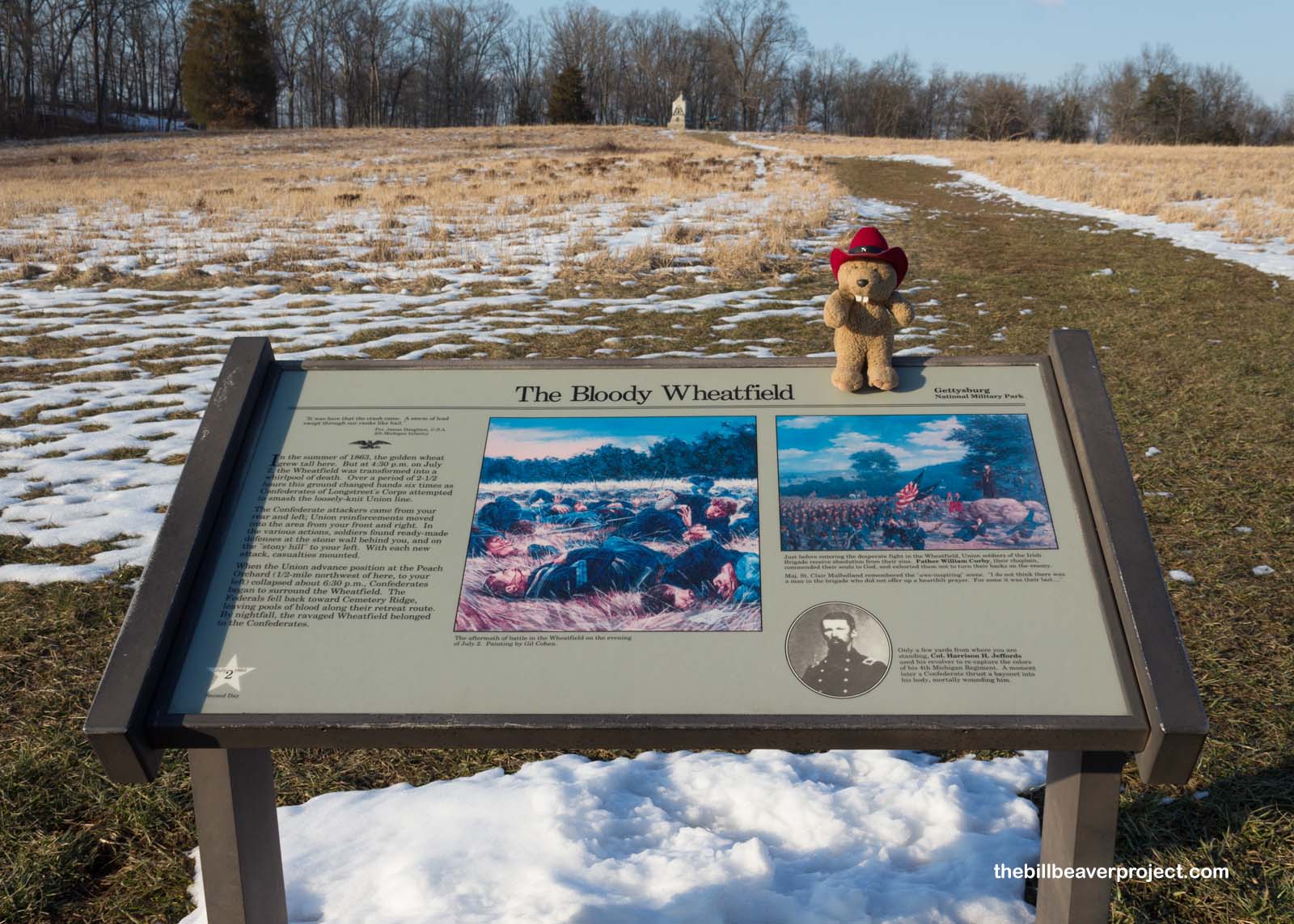 |
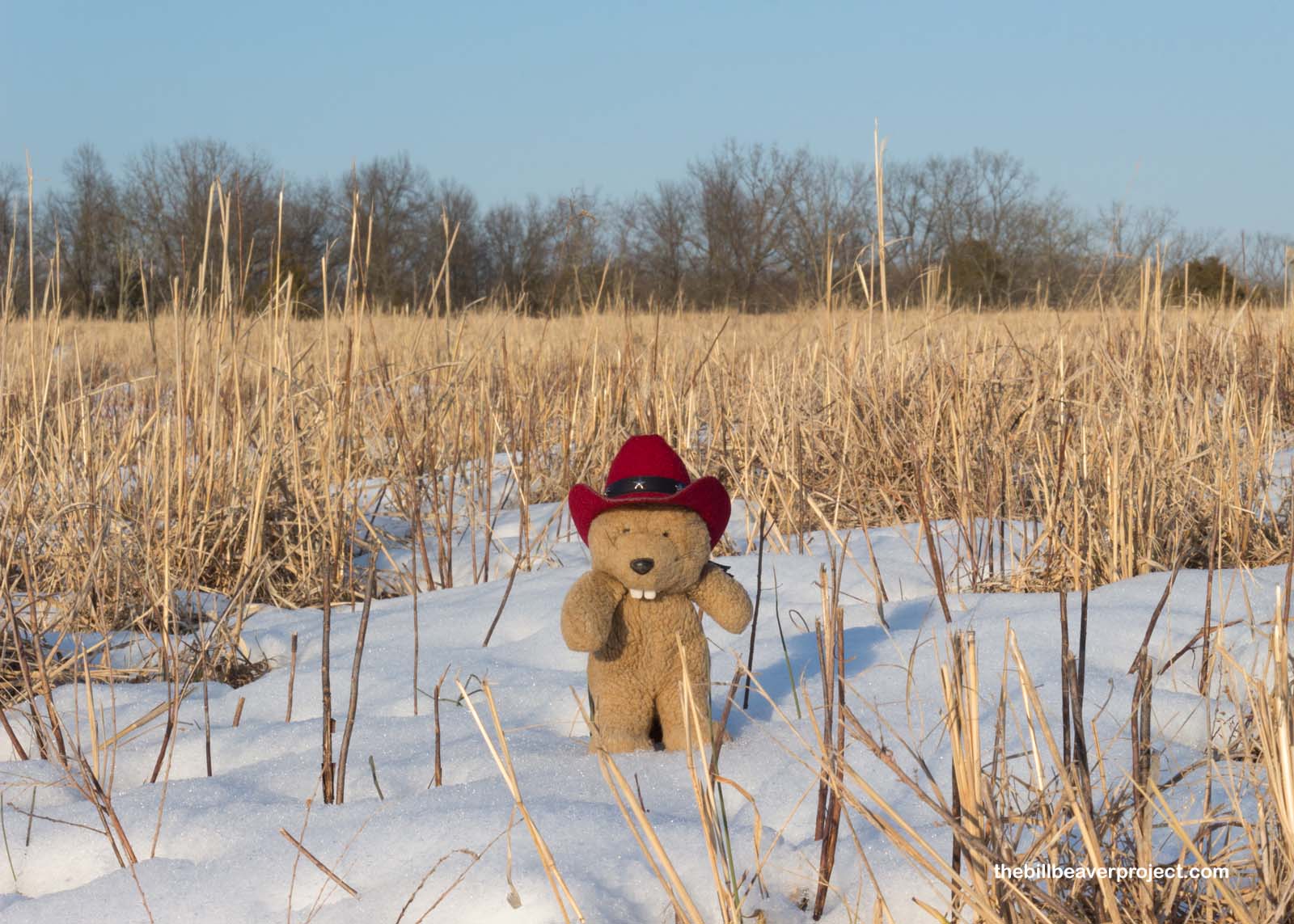 |
After the battle had drawn to a close, the Union still never counterattacked. Though General Meade would later be criticized for his reluctance to attack, the damage to the Confederate cause had been done. Their army decimated, their foreign support no longer an option, they retreated in the heavy rains on, of all days, the Fourth of July.
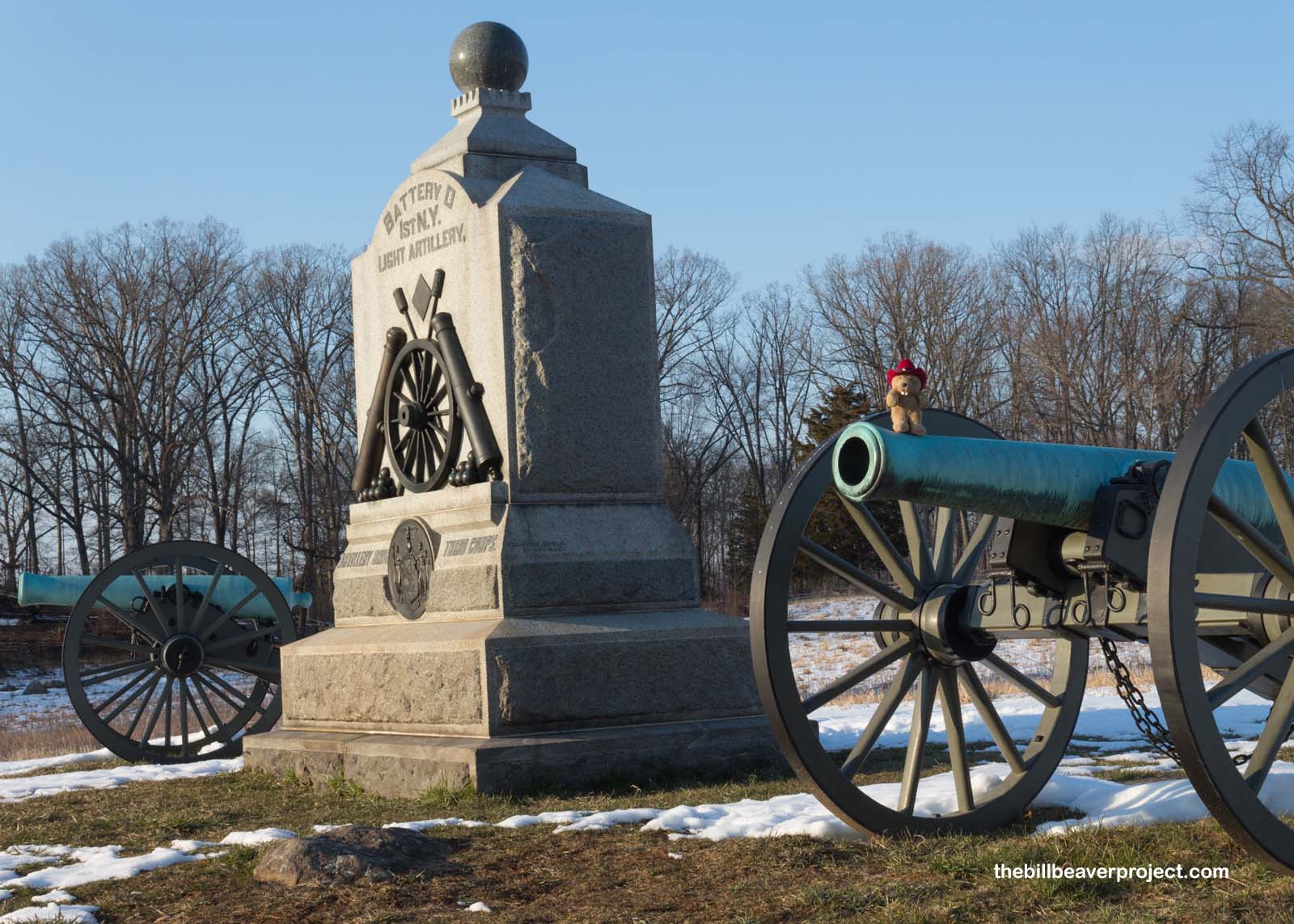 |
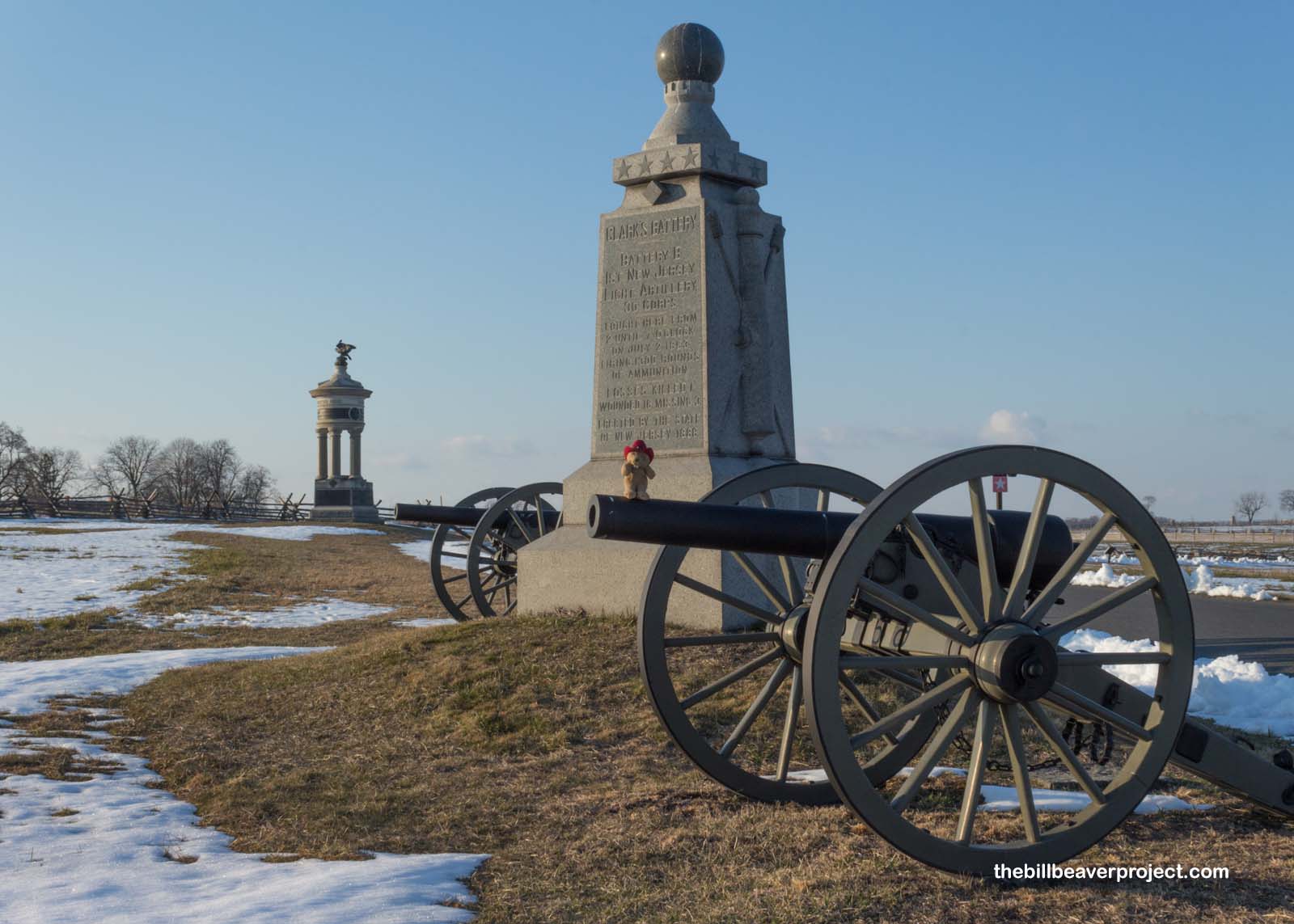 |
It was a humbling experience visiting Antietam and Gettysburg, where echoes and ghosts of past wars still seem to linger around these old battlefields. I had to wonder, with so many angry debates happening around the country today, if another civil war could ever happen here. What would drive Americans to turn against other Americans as they did in the 1860s? I hope we’ll never find out. For now, I must be on my way back West and prepare for new adventures in history.
Address ya later!

 Previous Day |
Total Ground Covered: 823.0 mi (1,292.4 km) |
 More 2018 Adventures |
